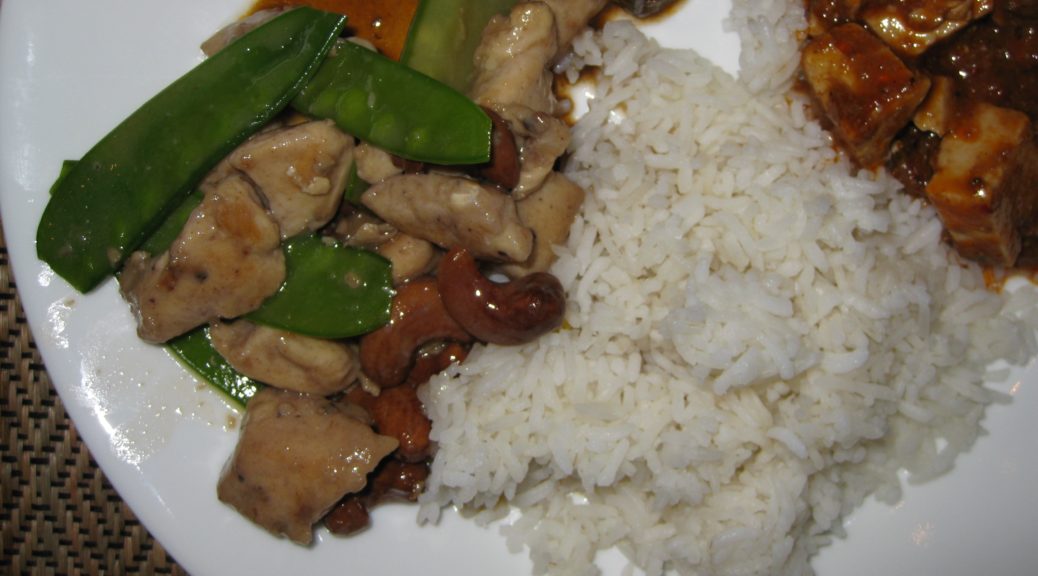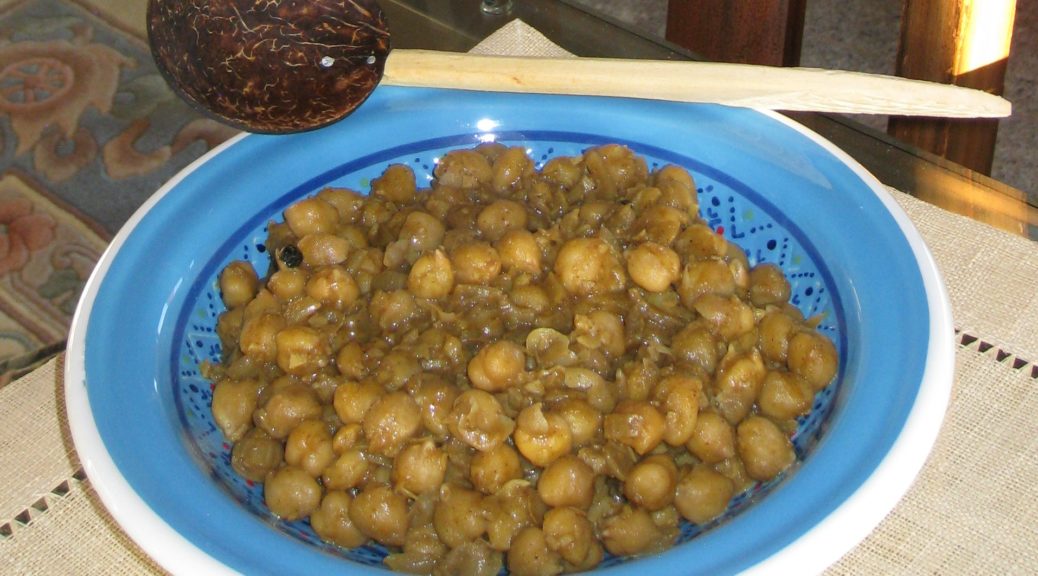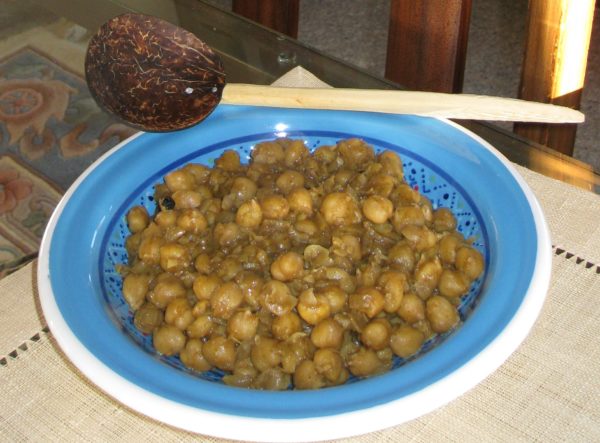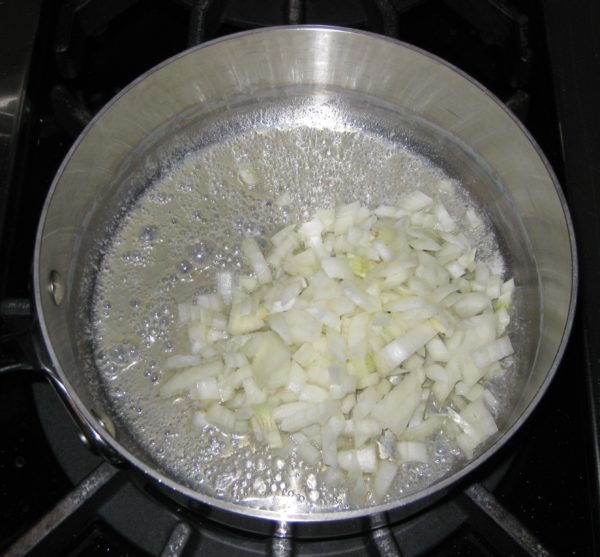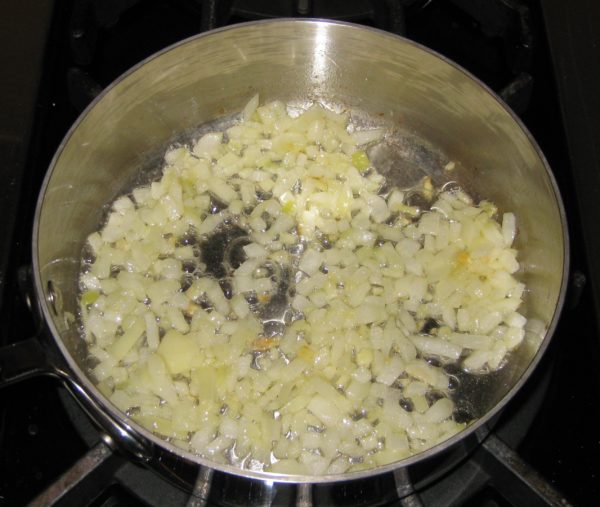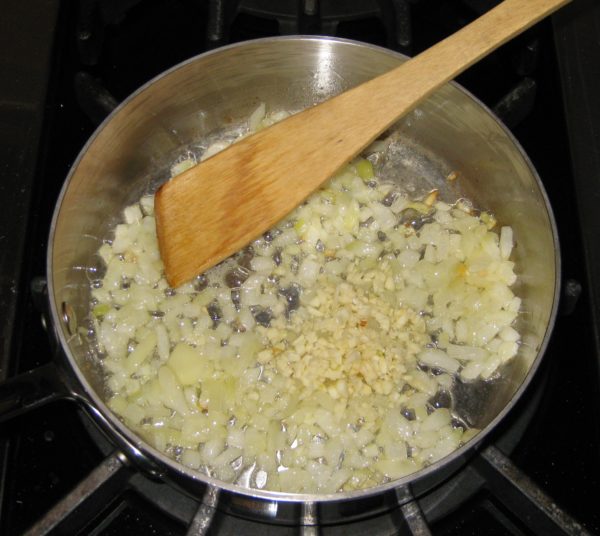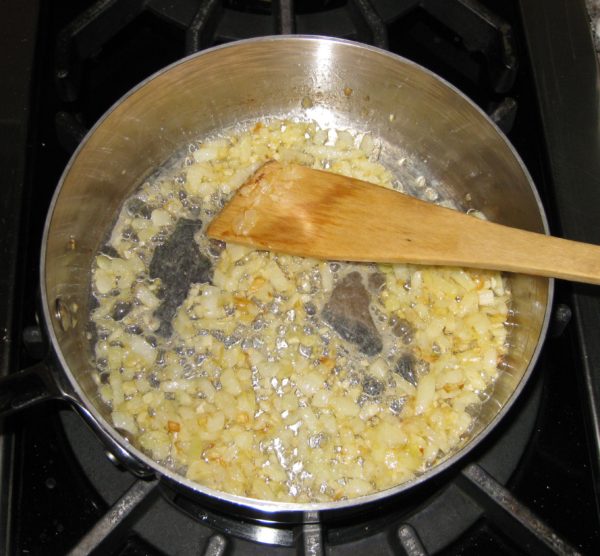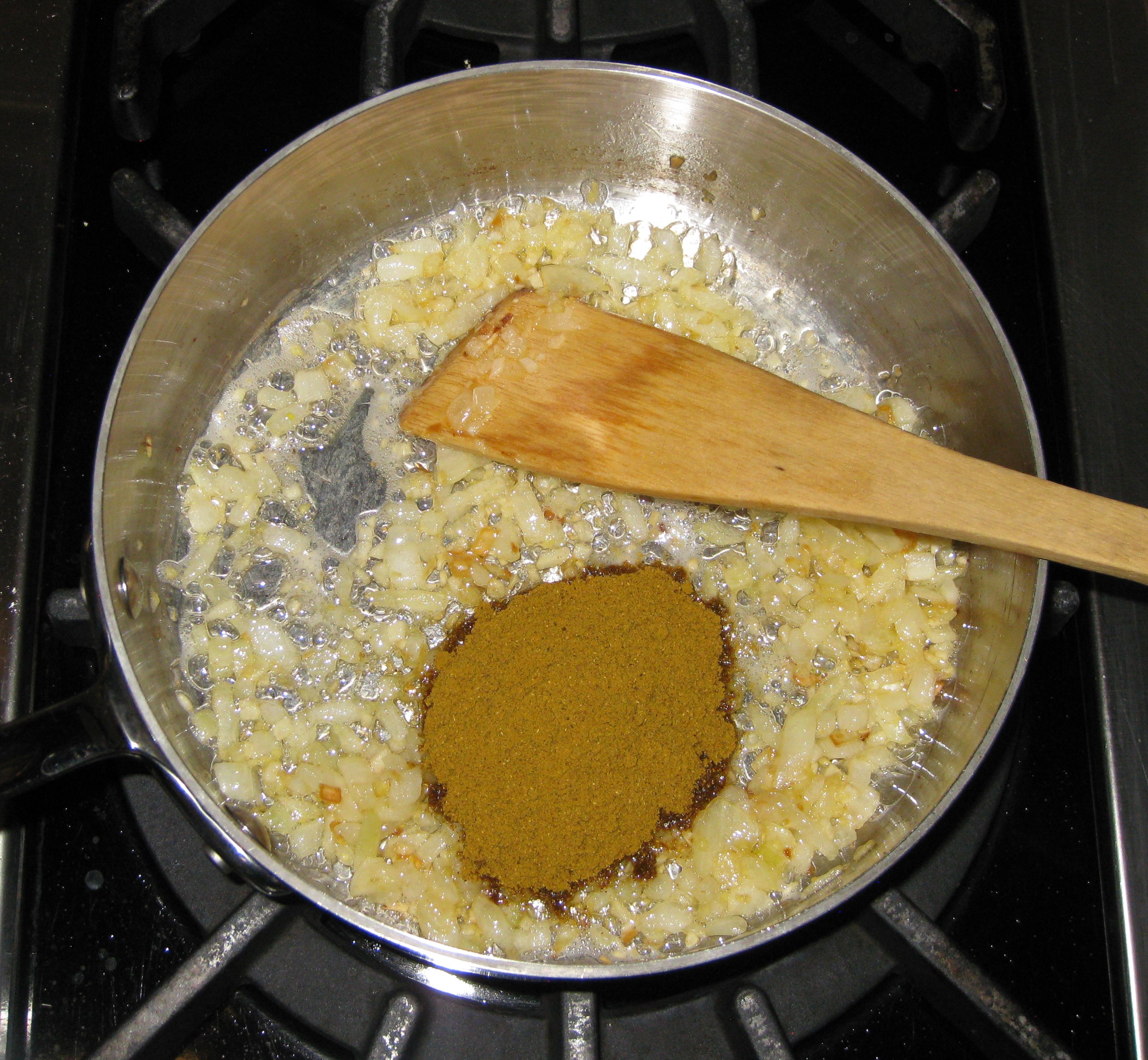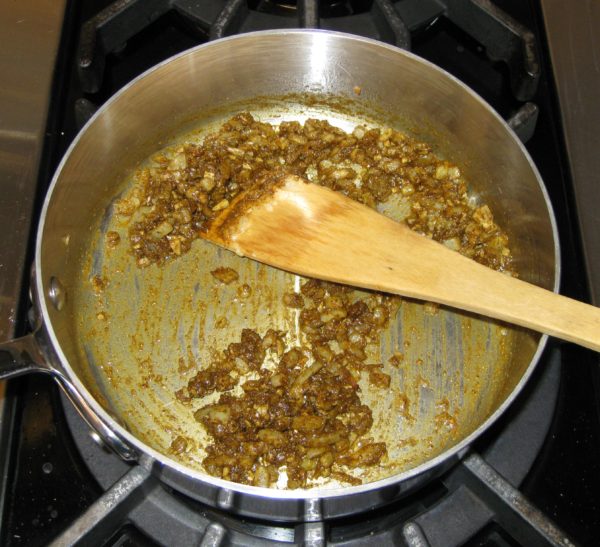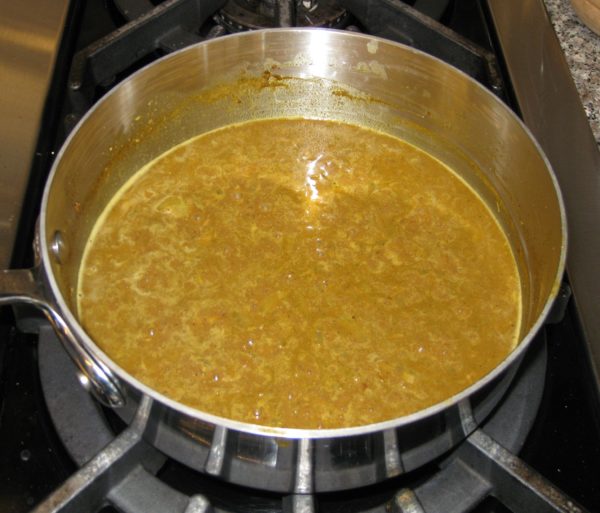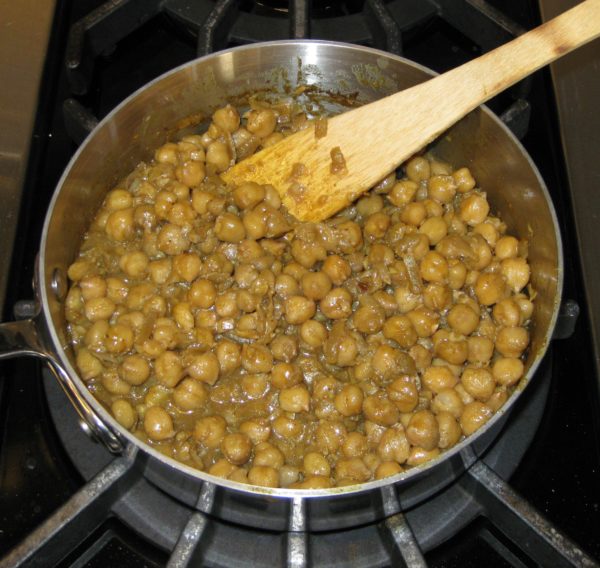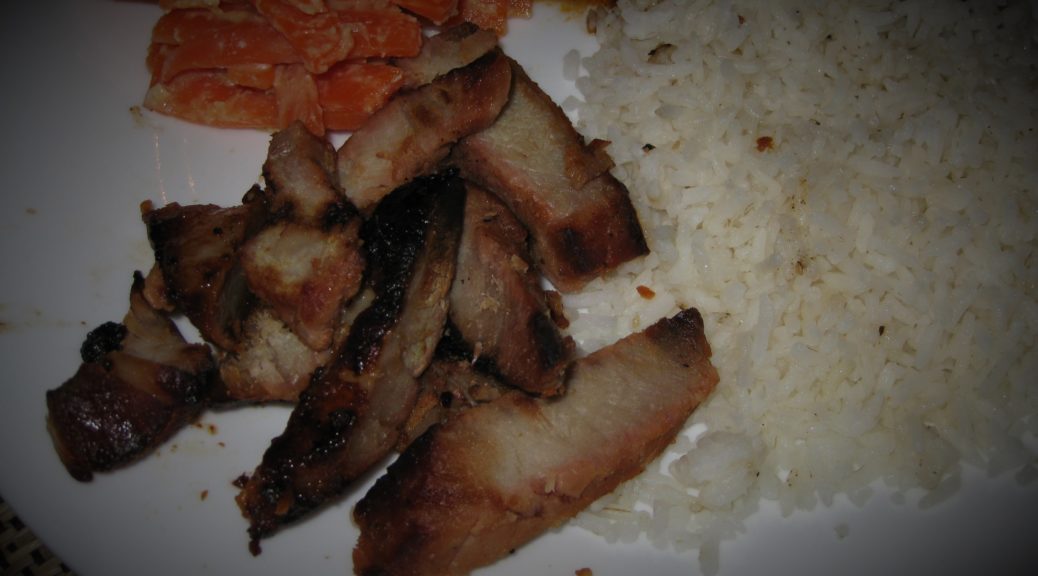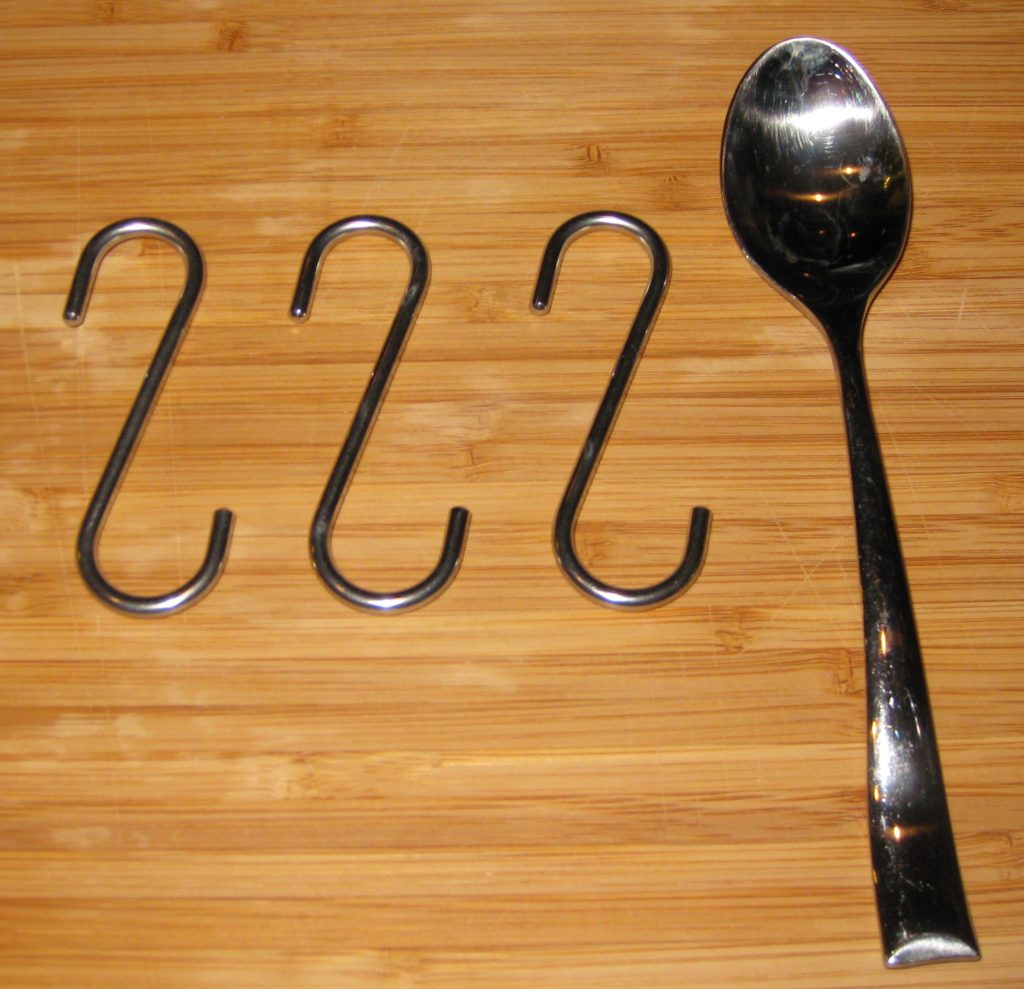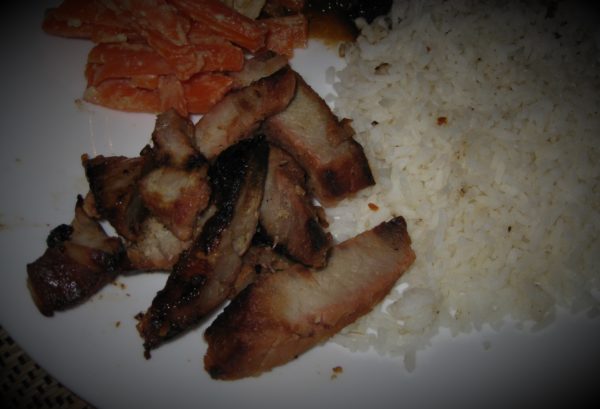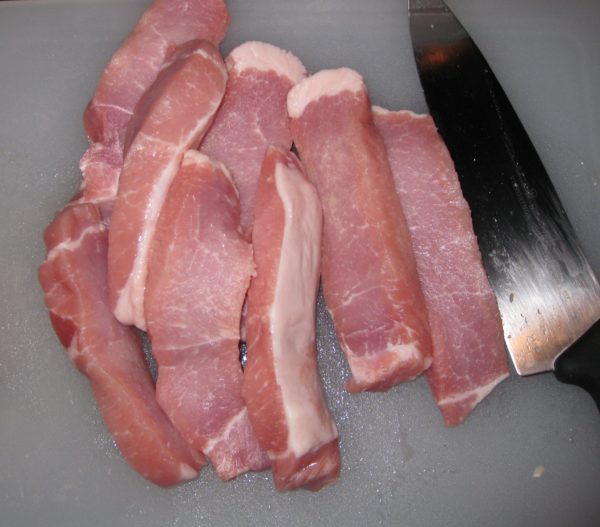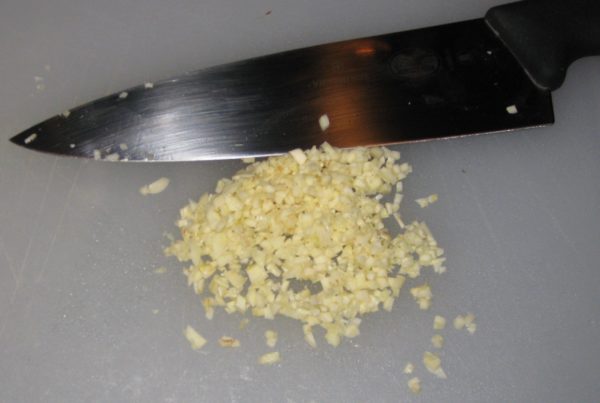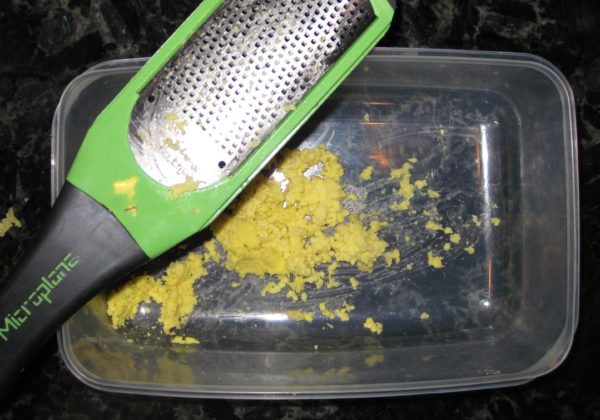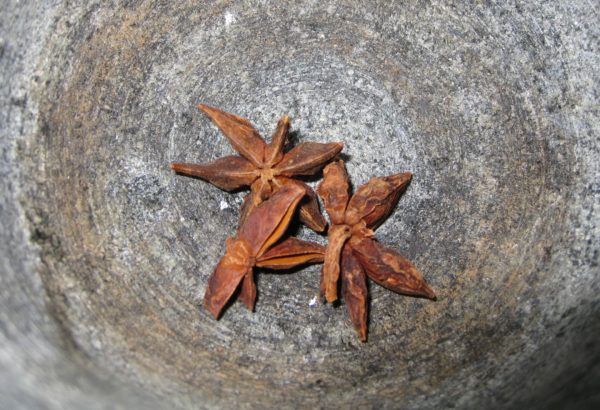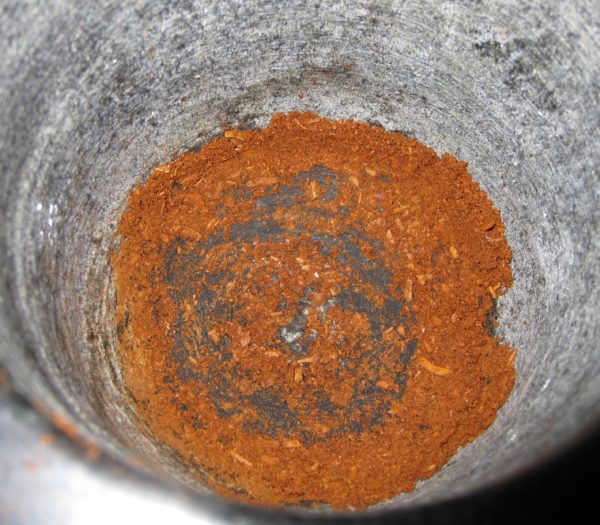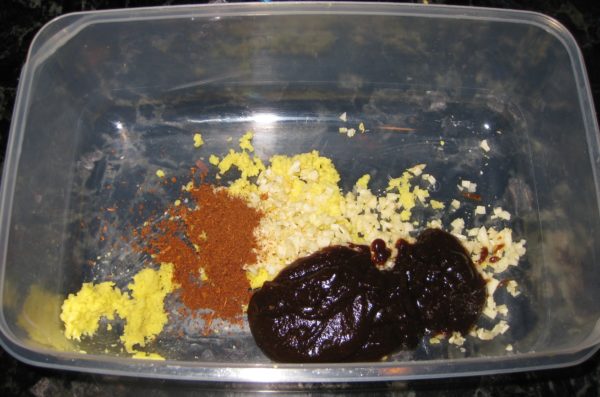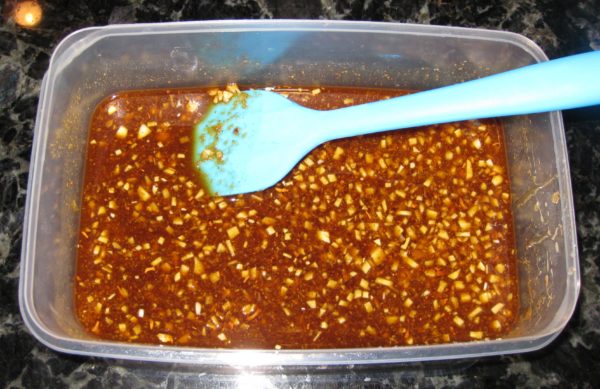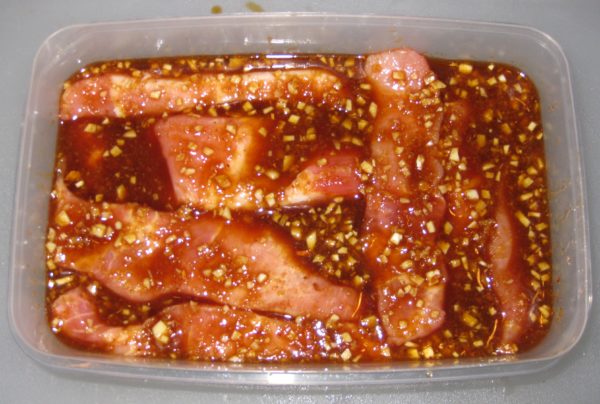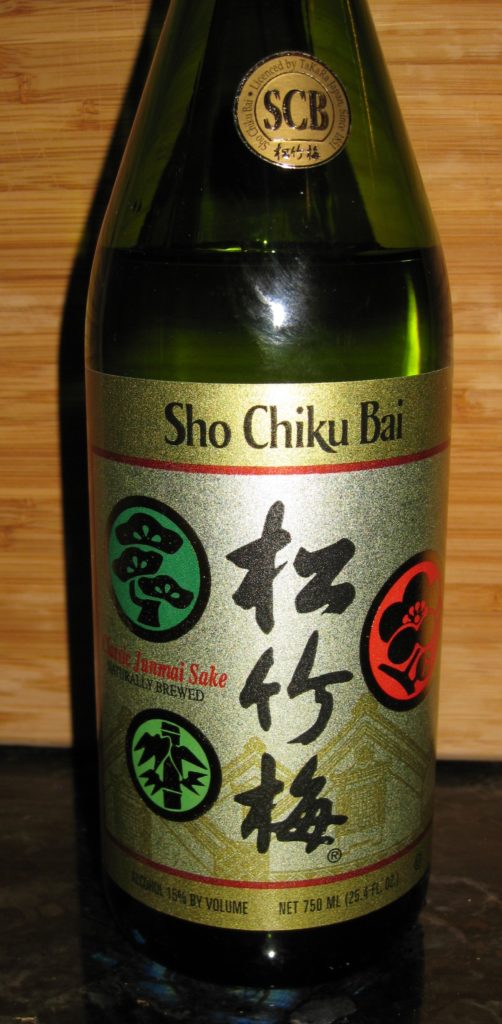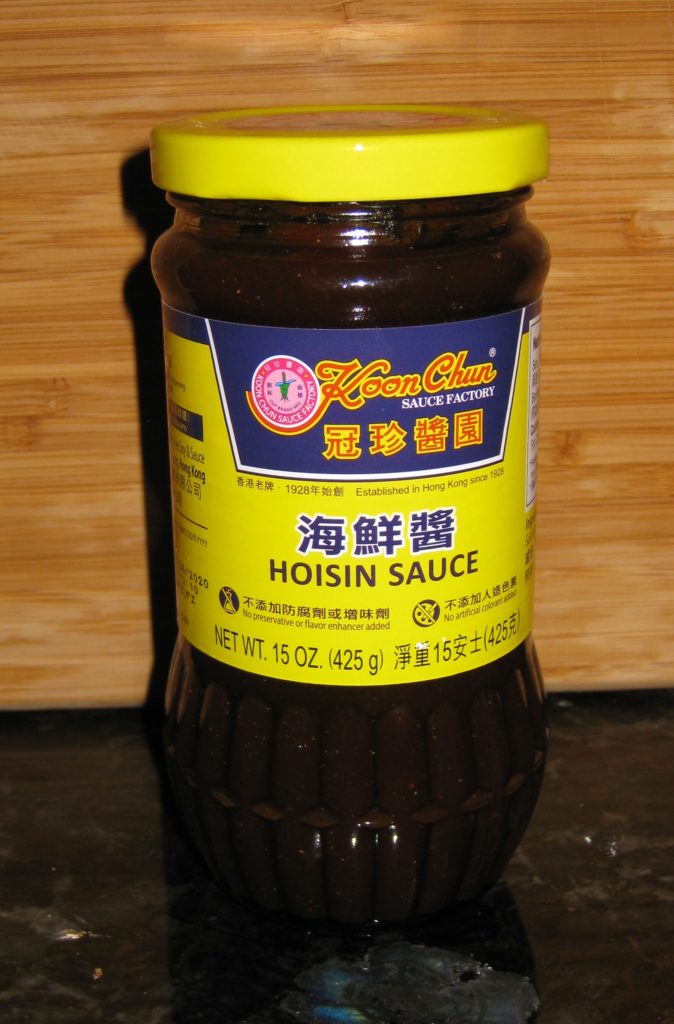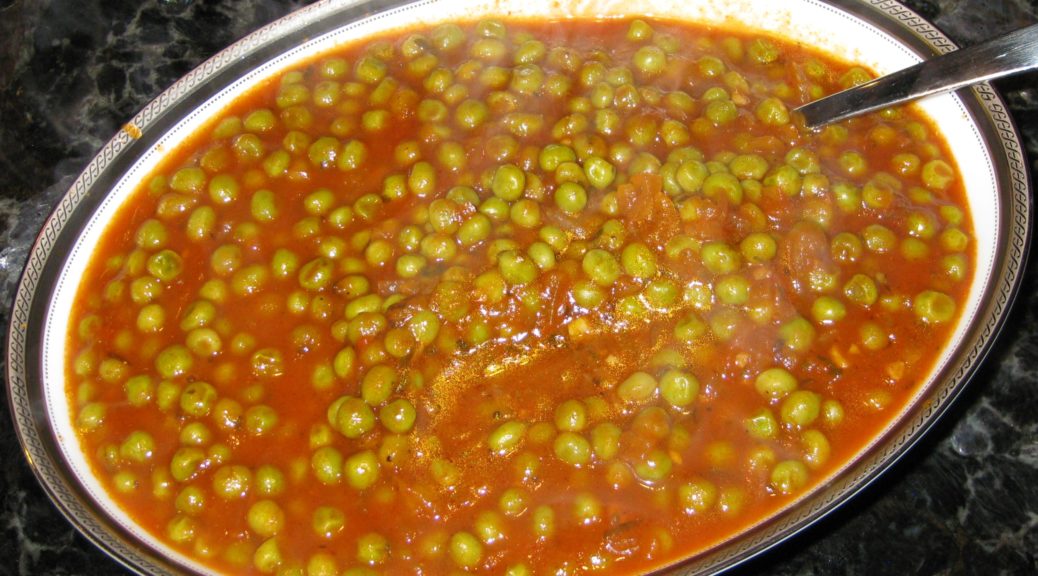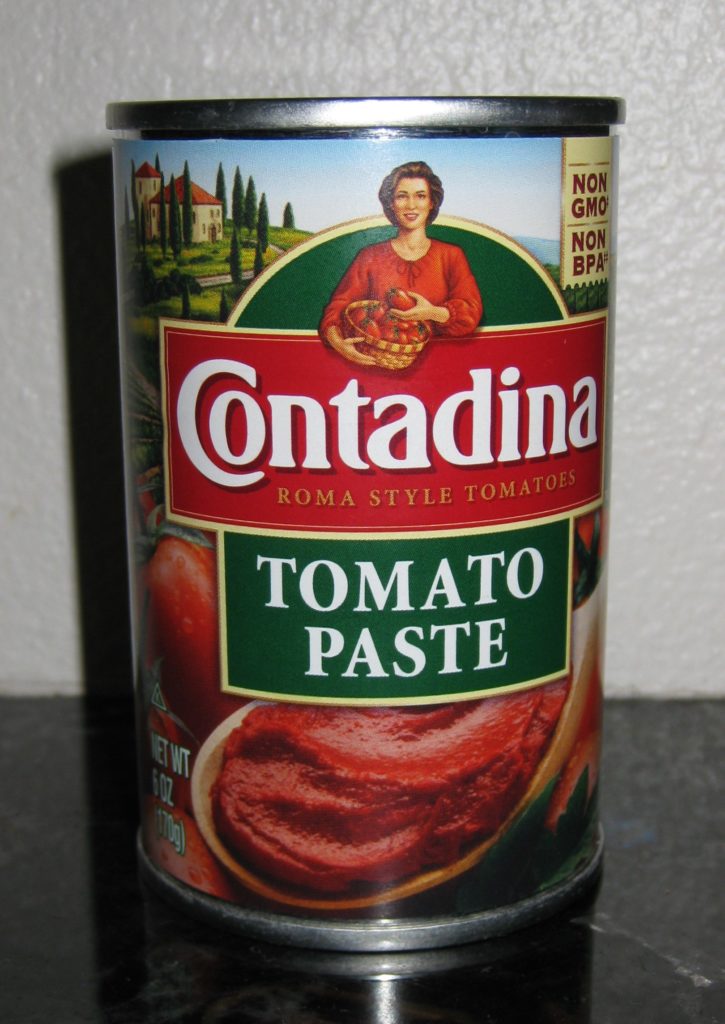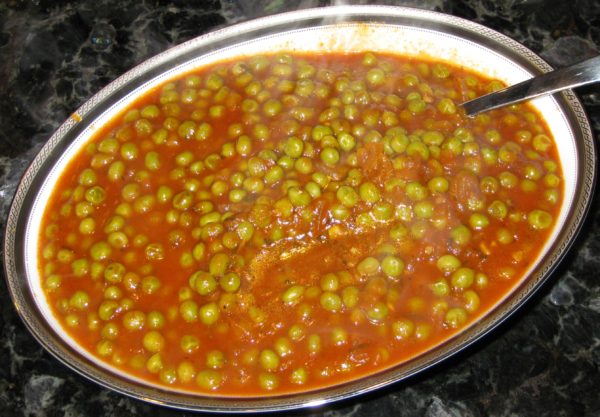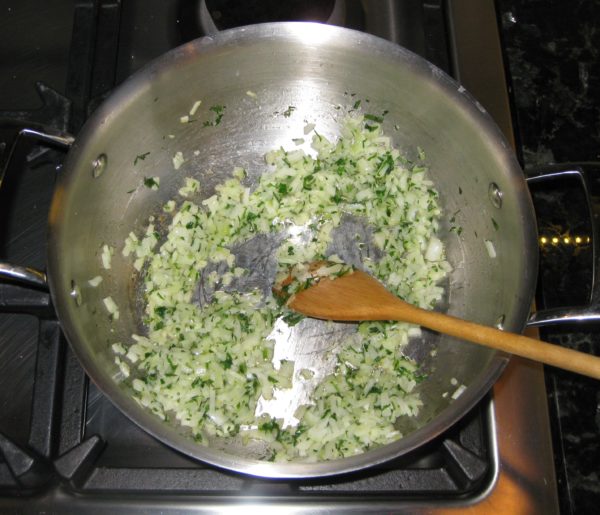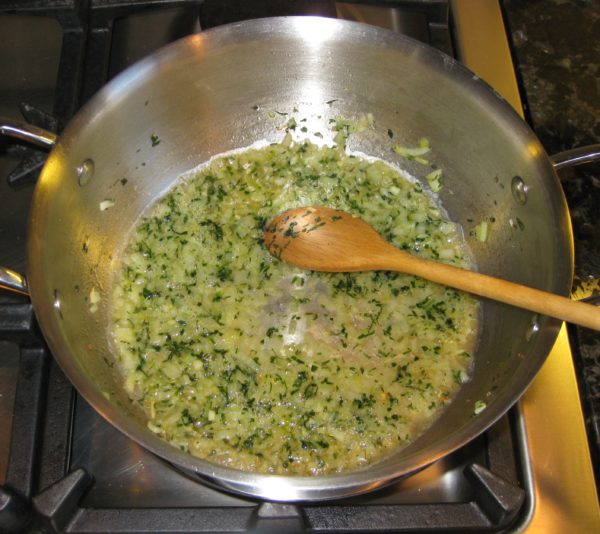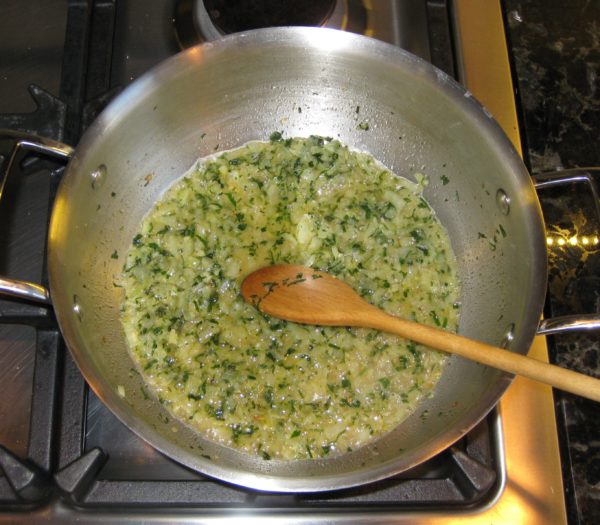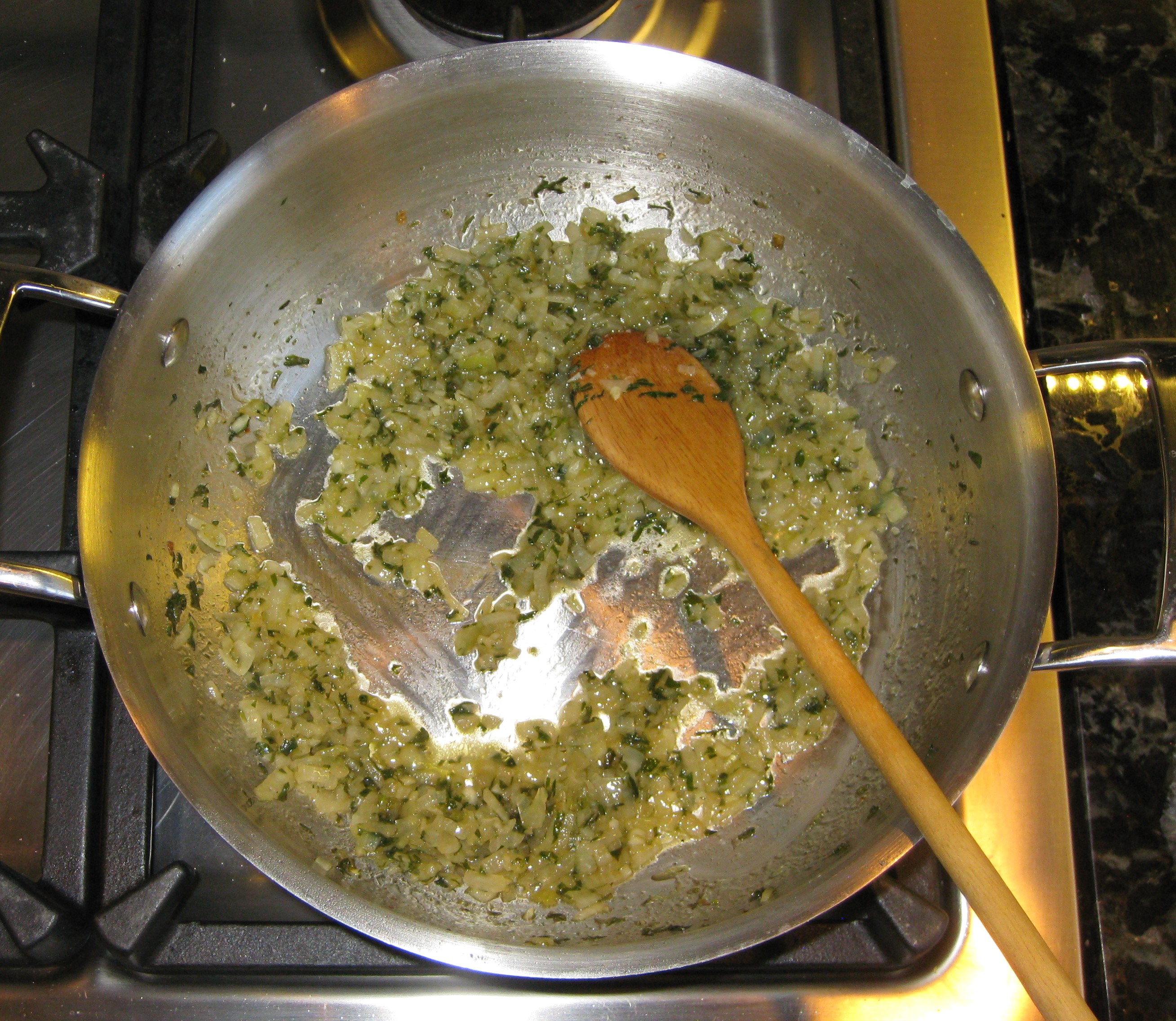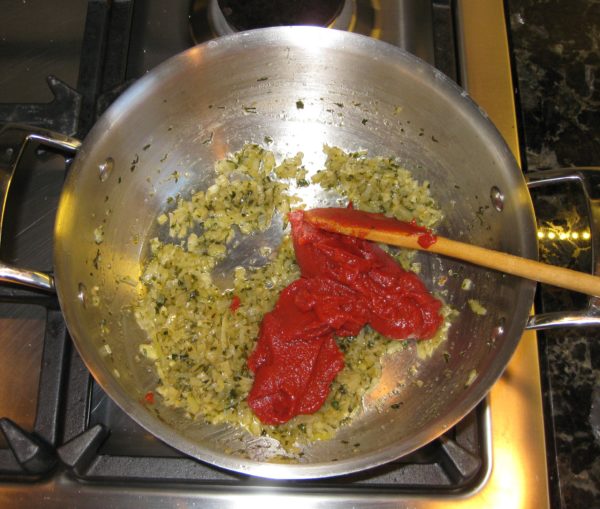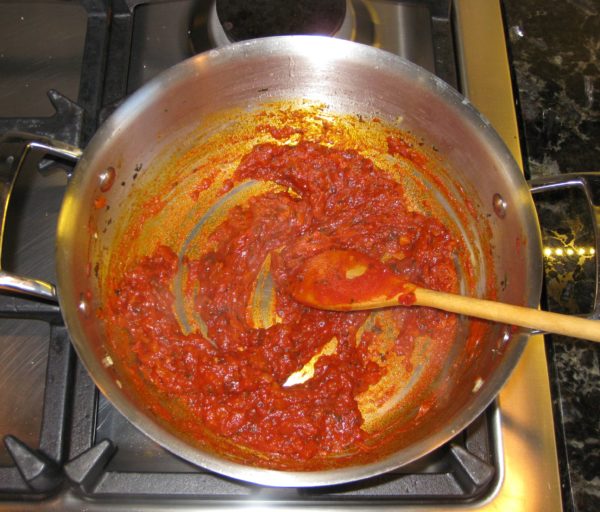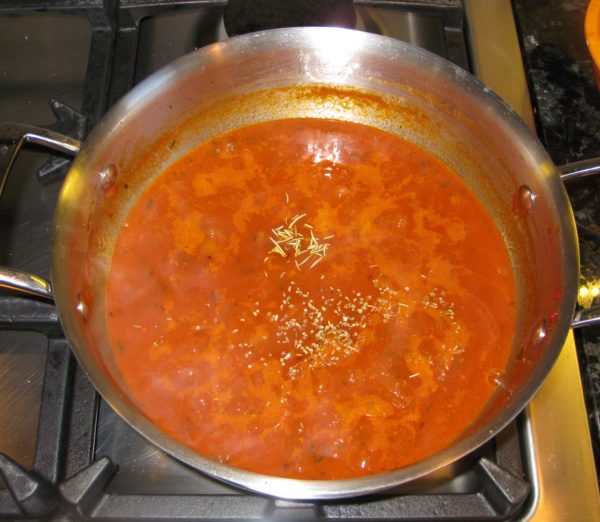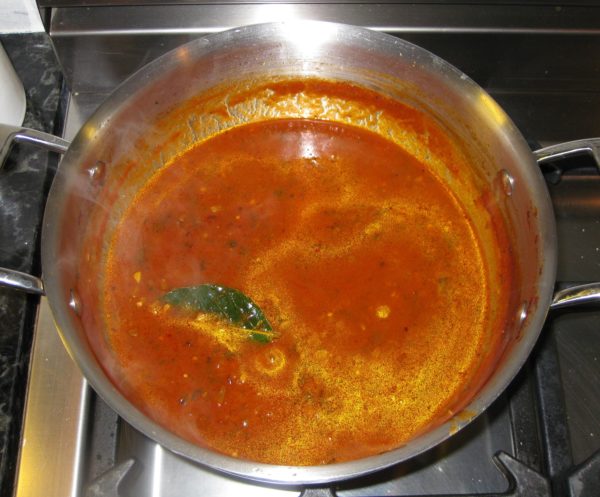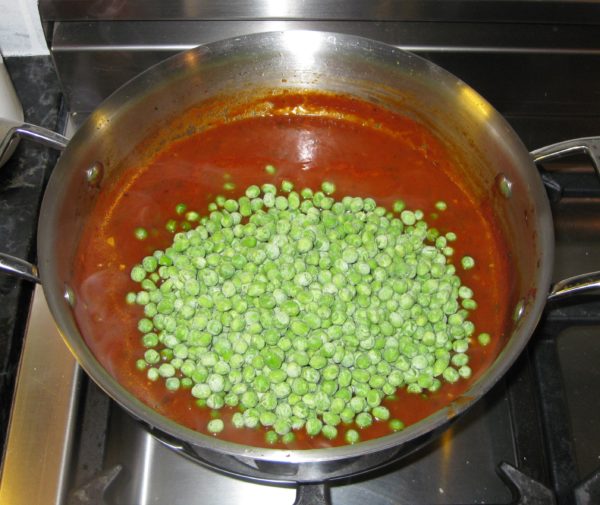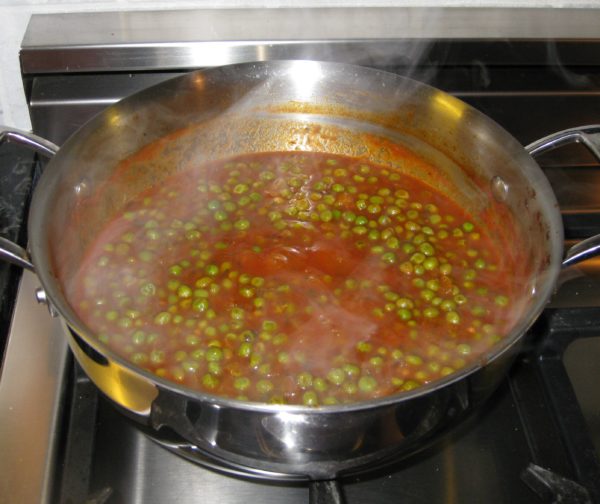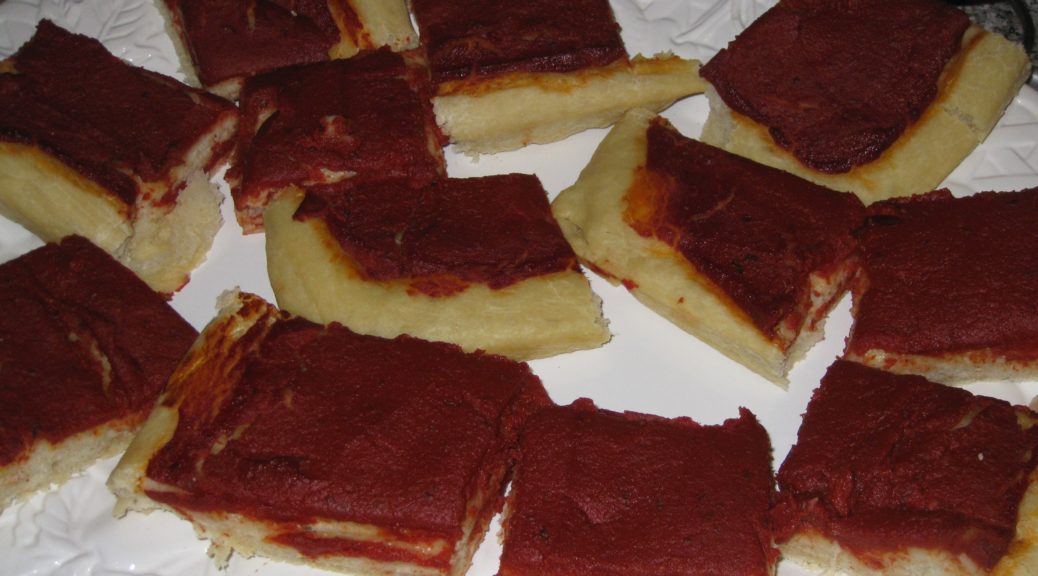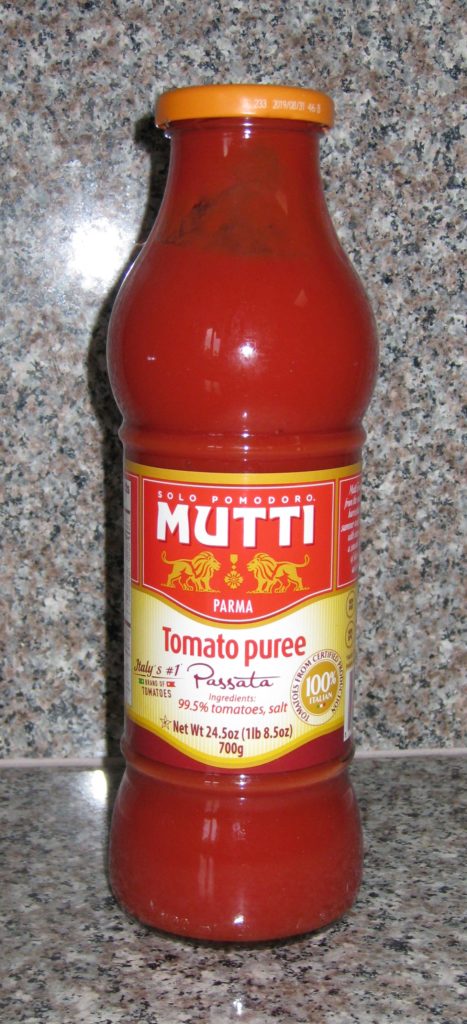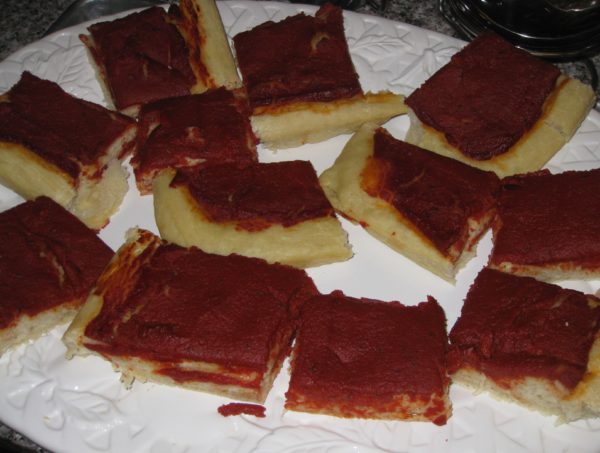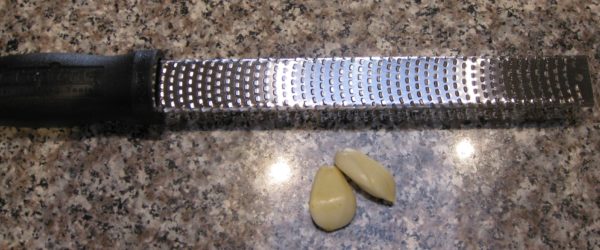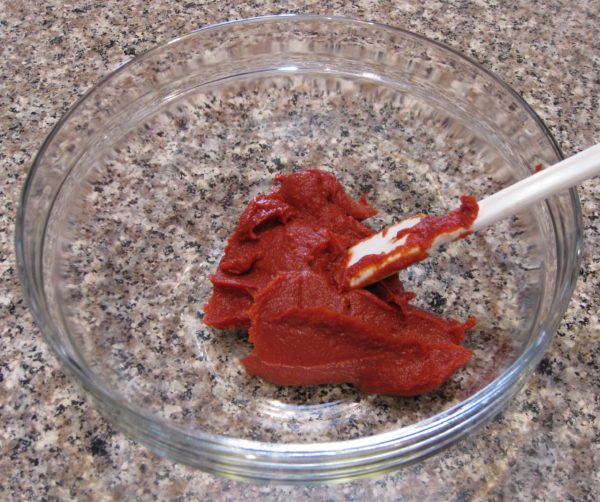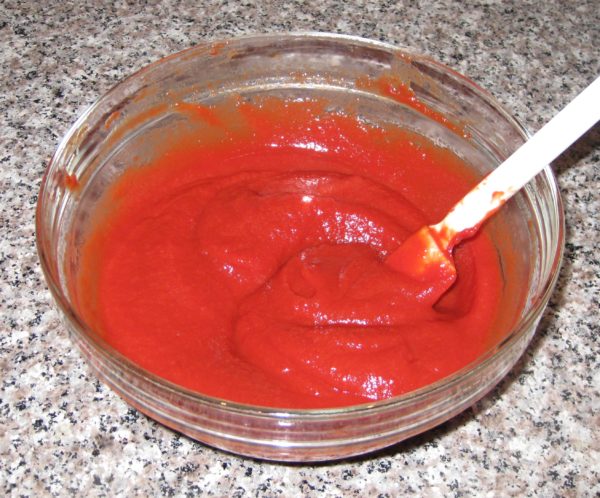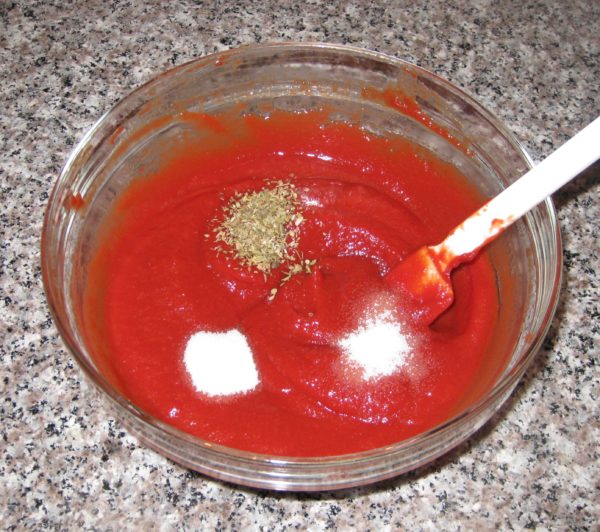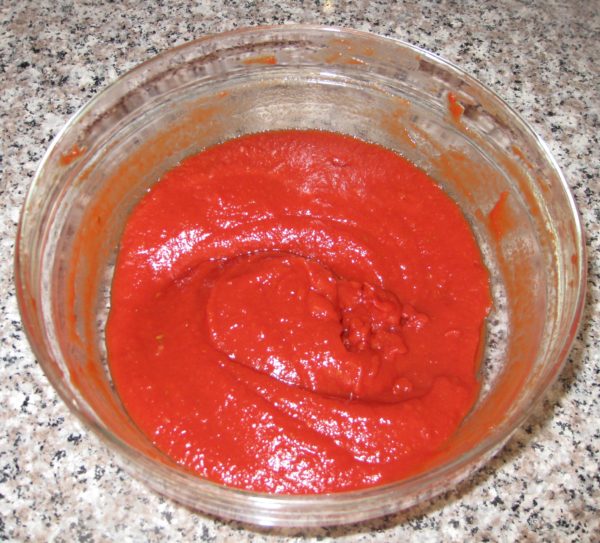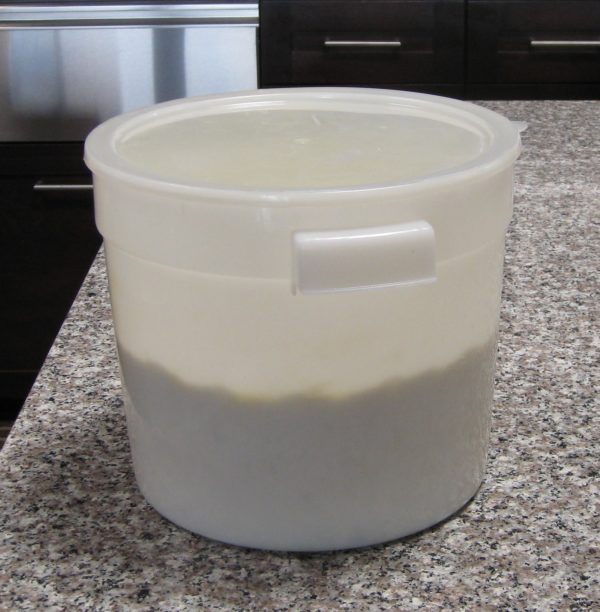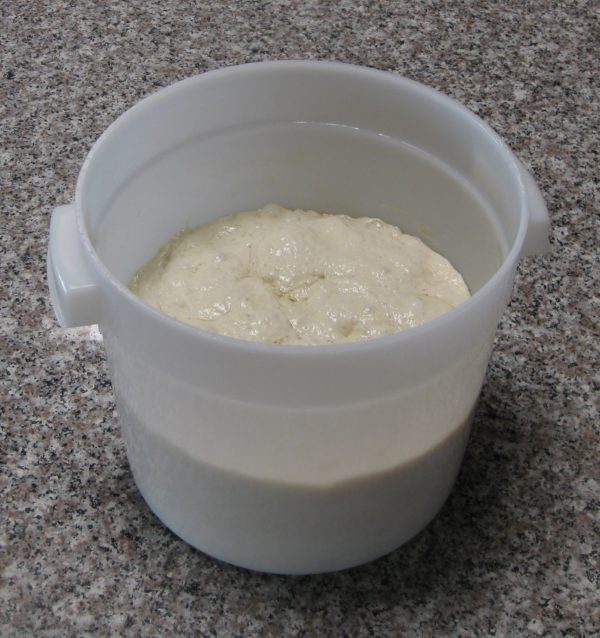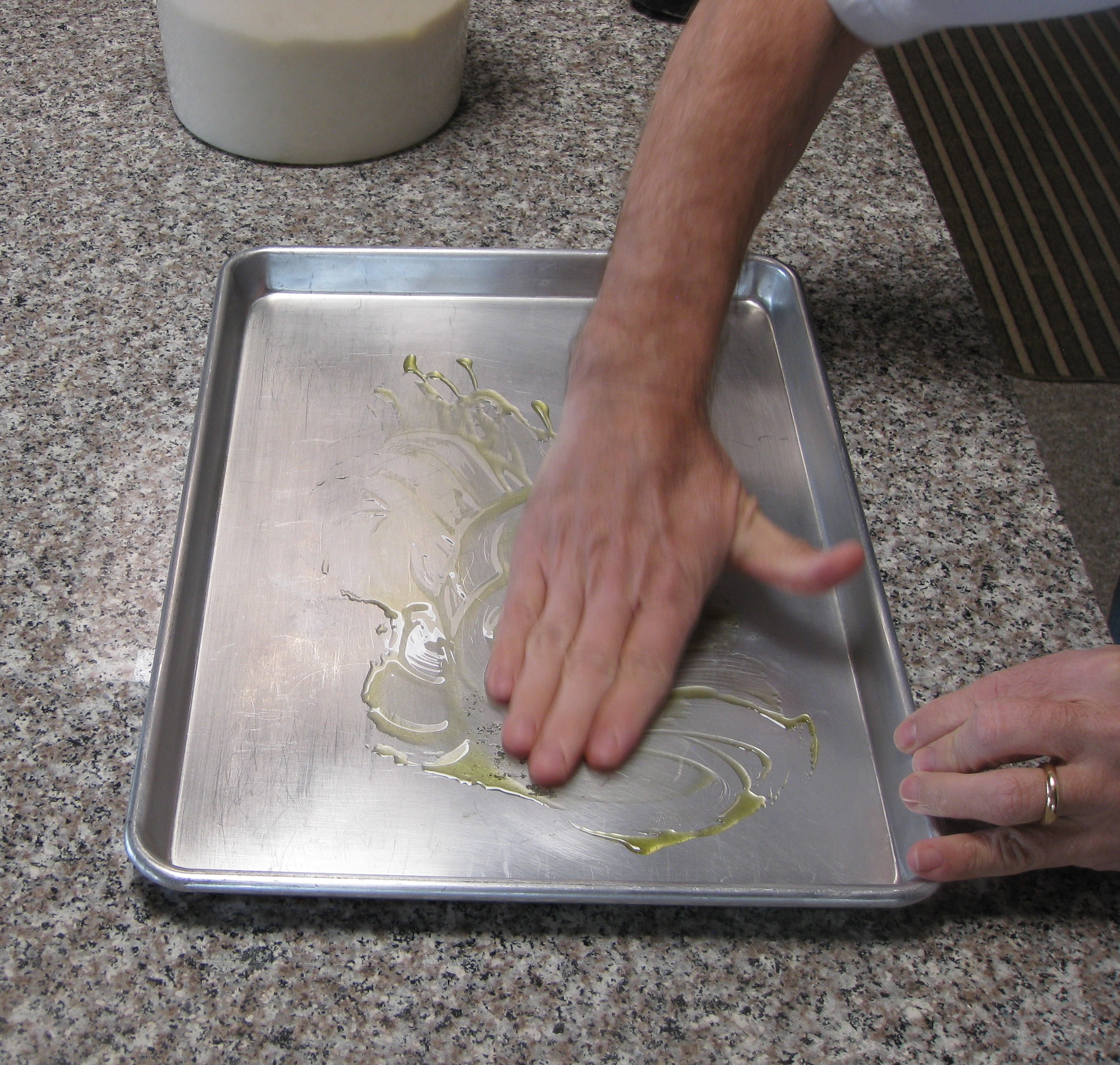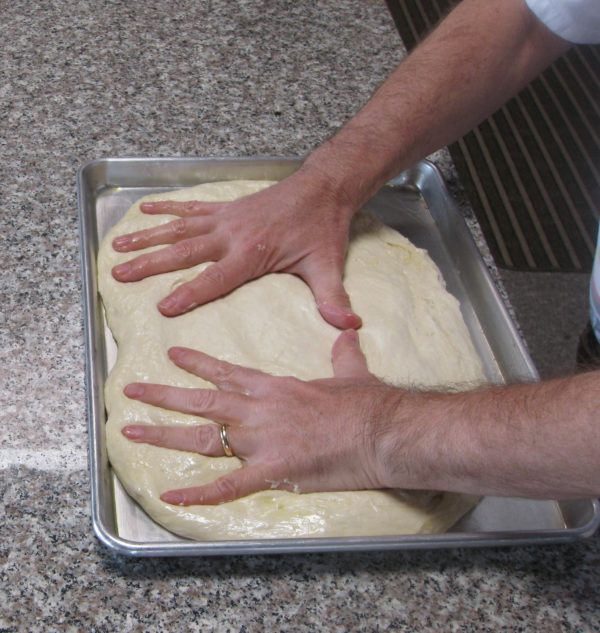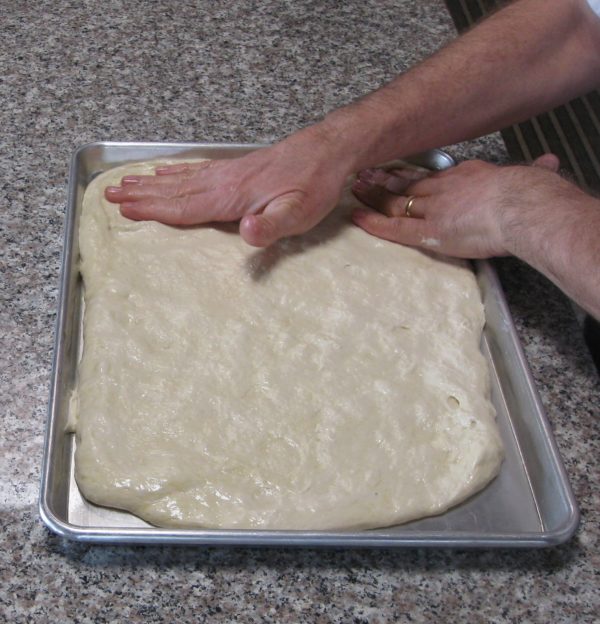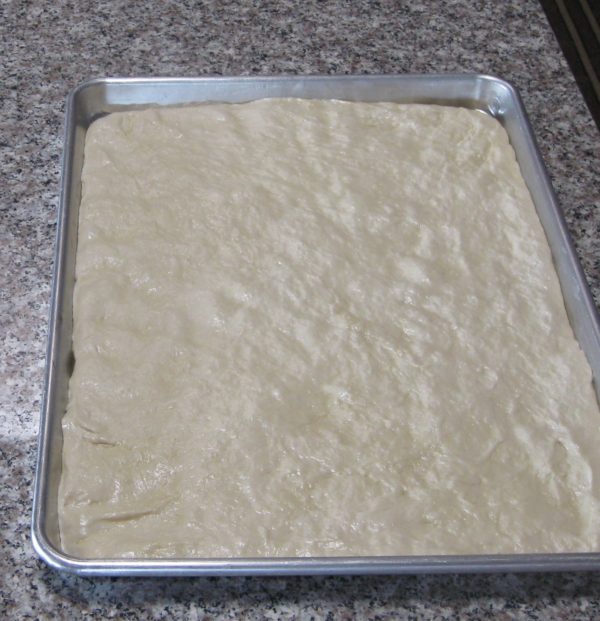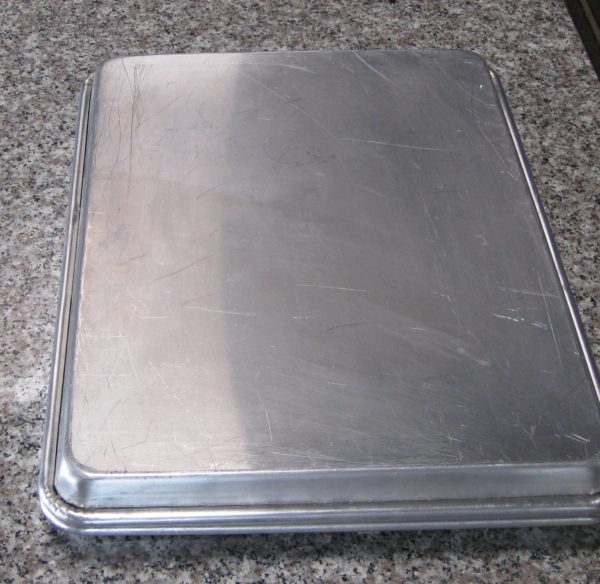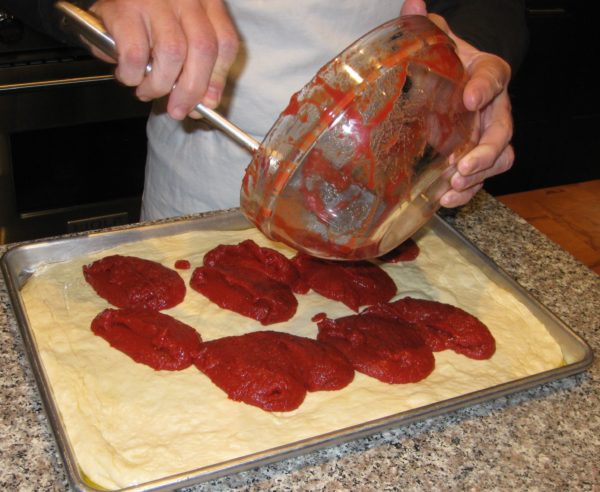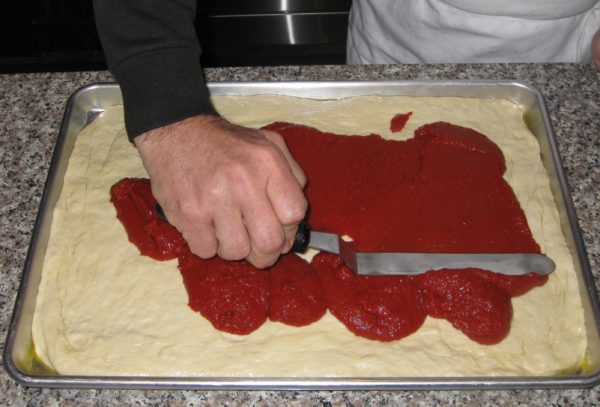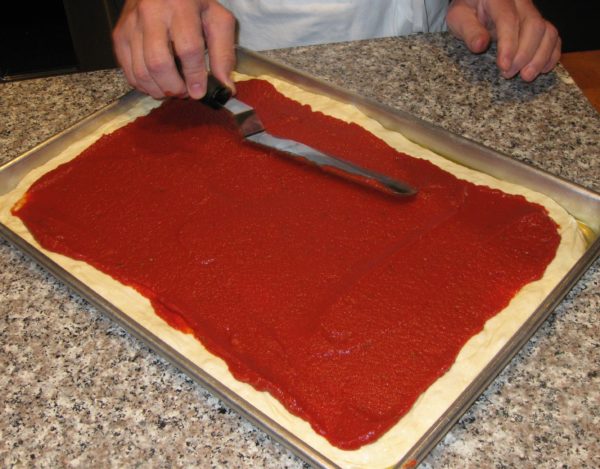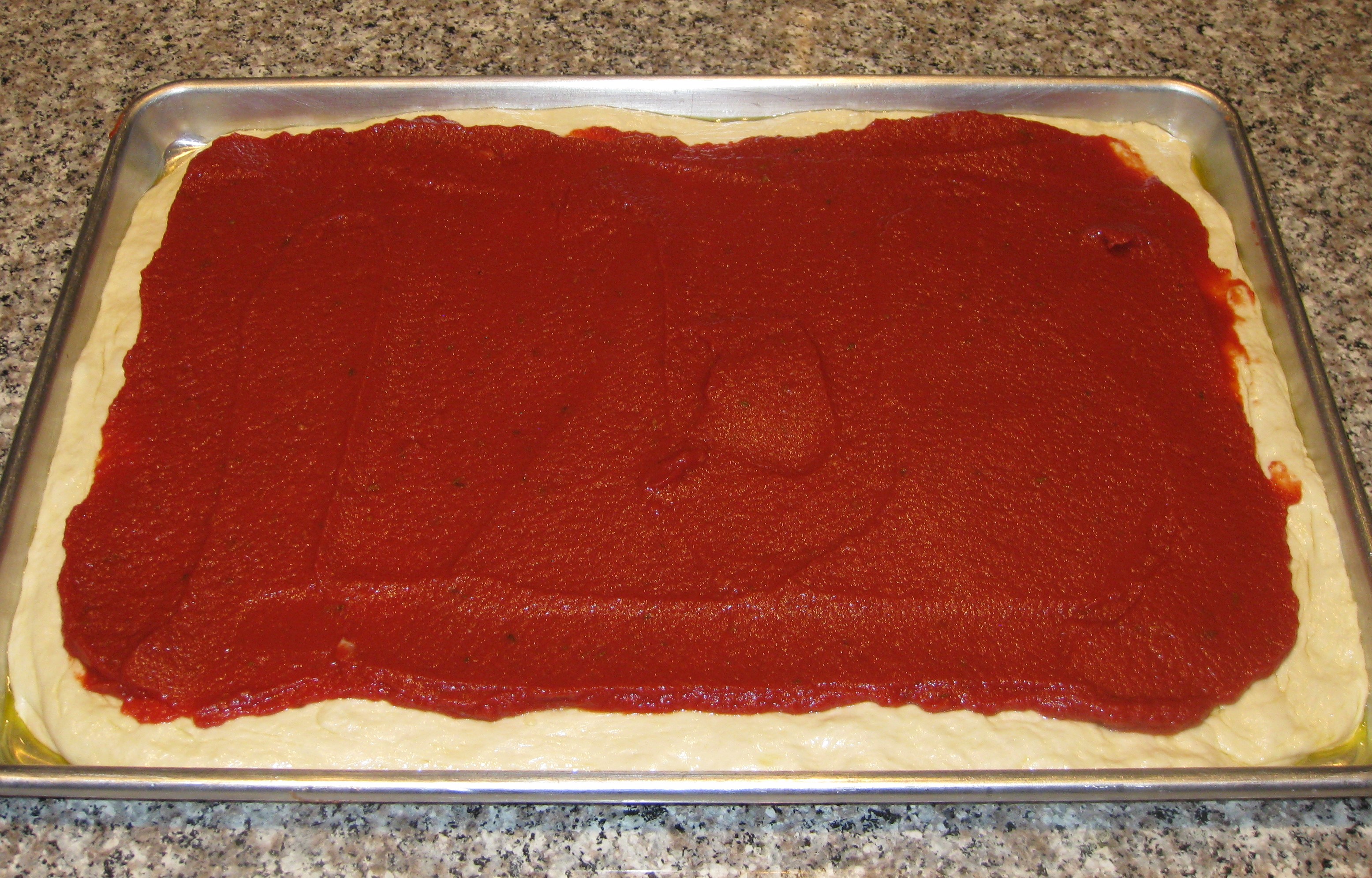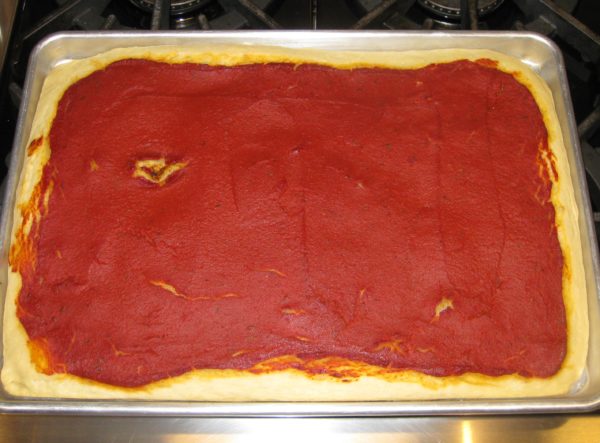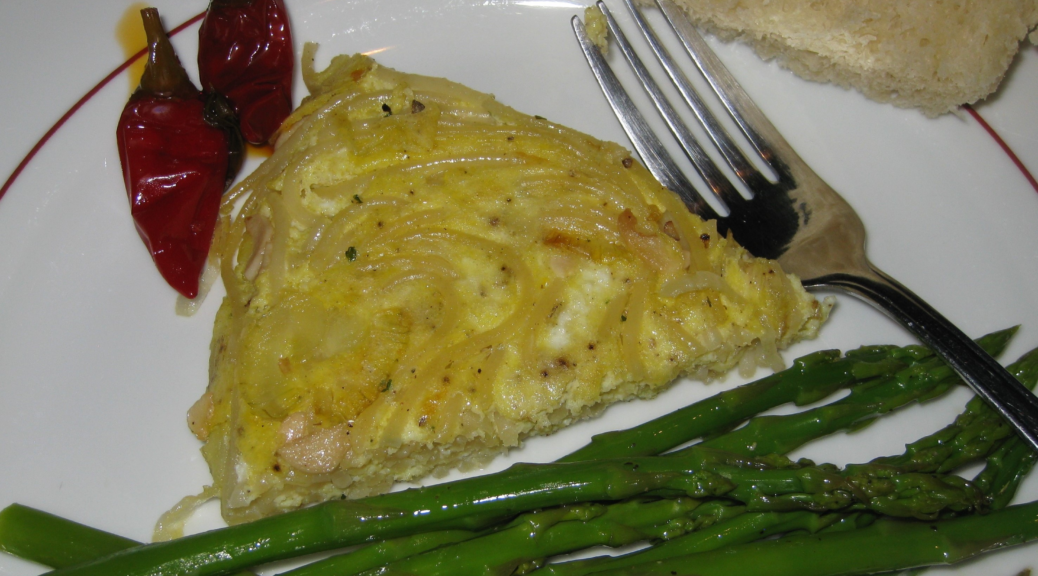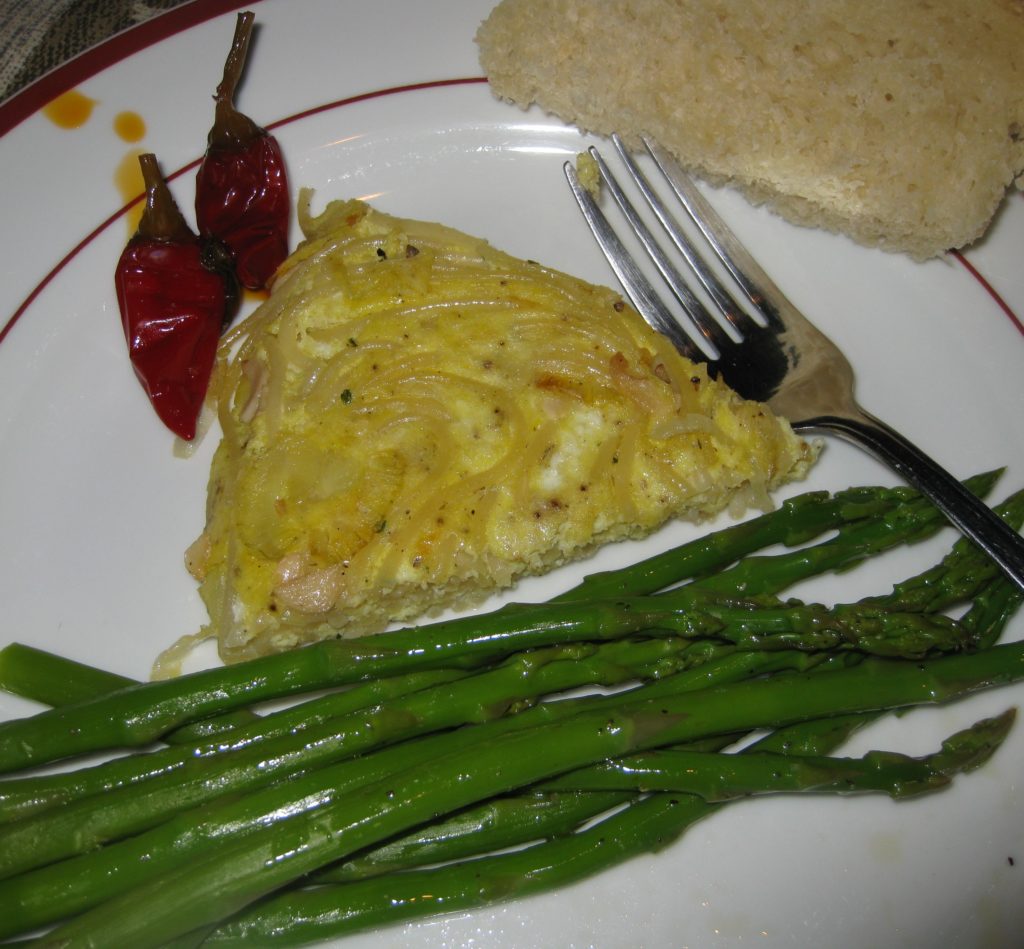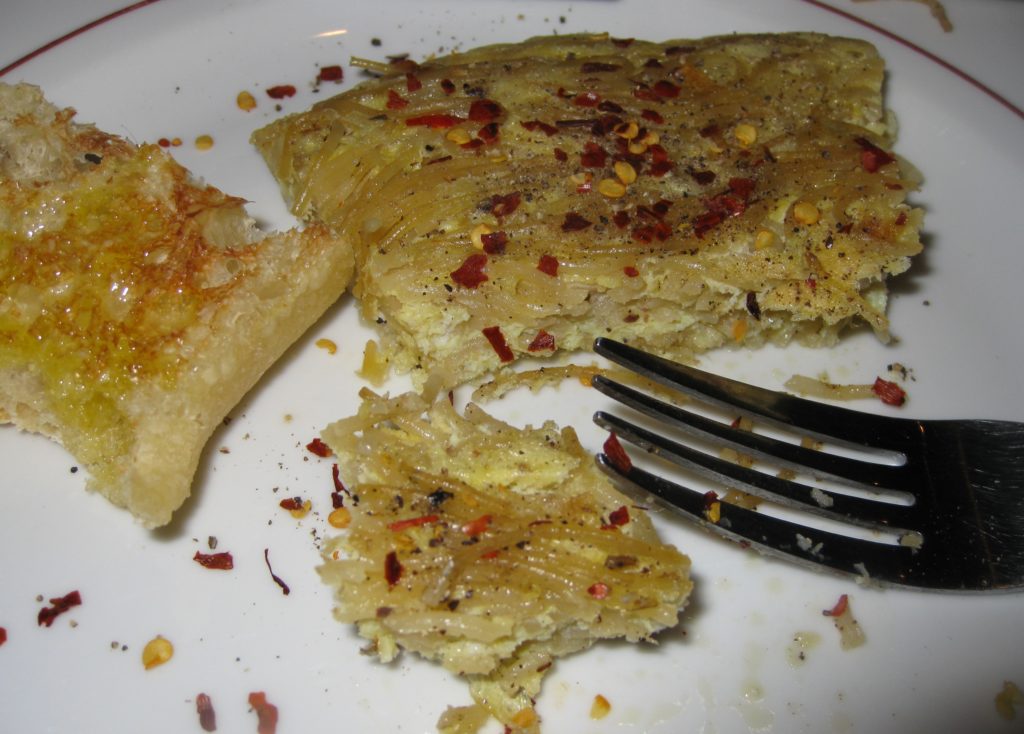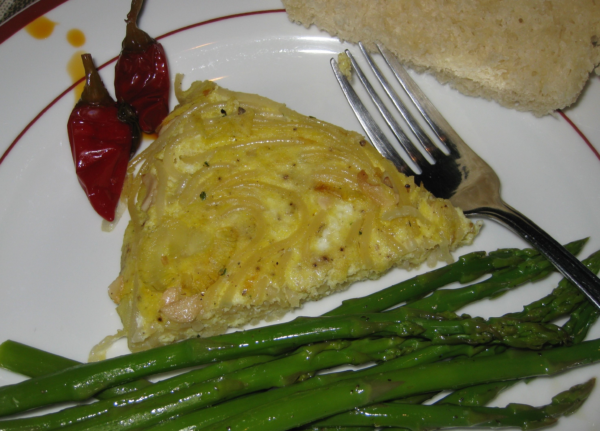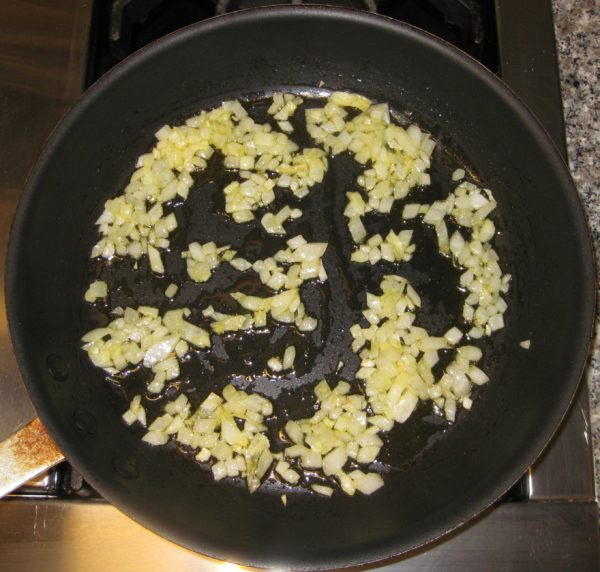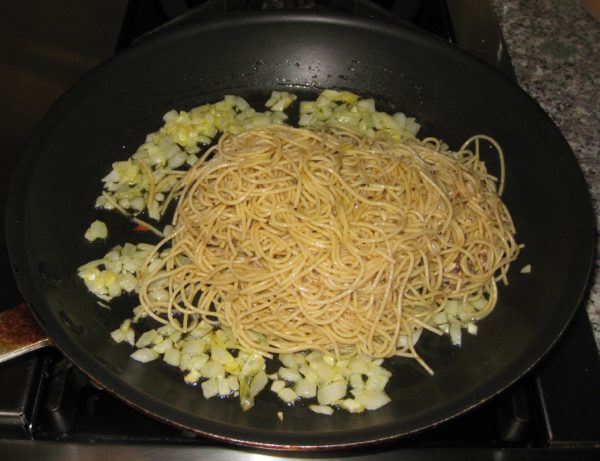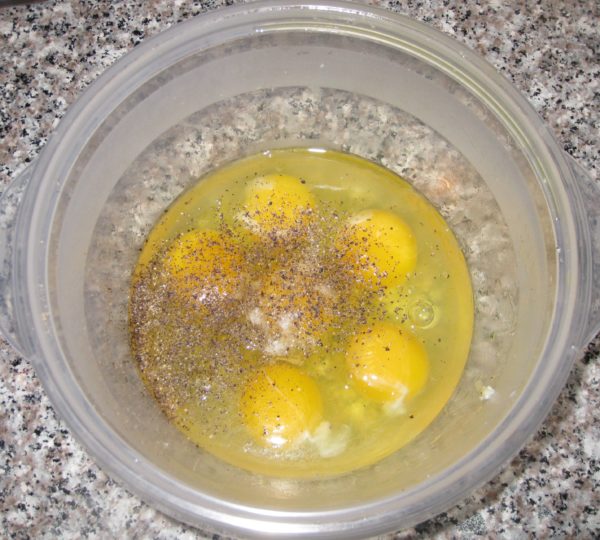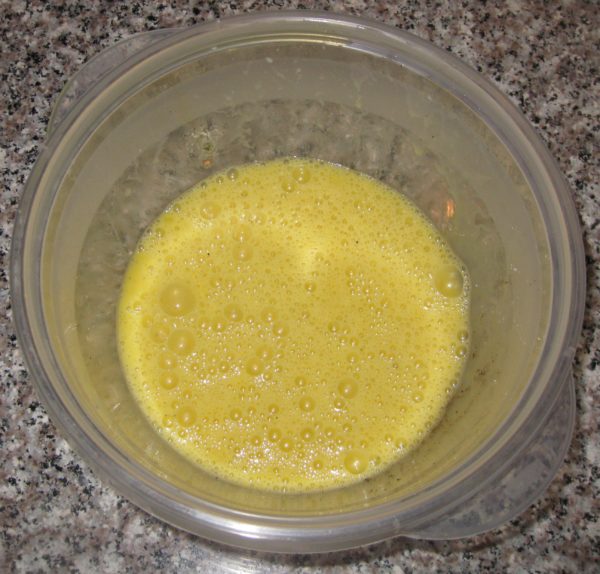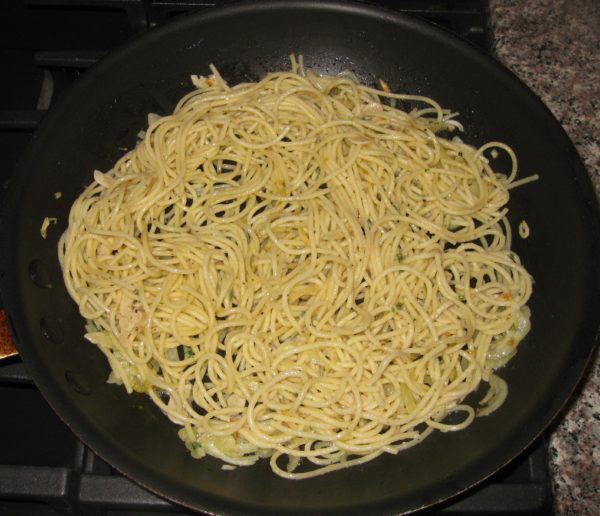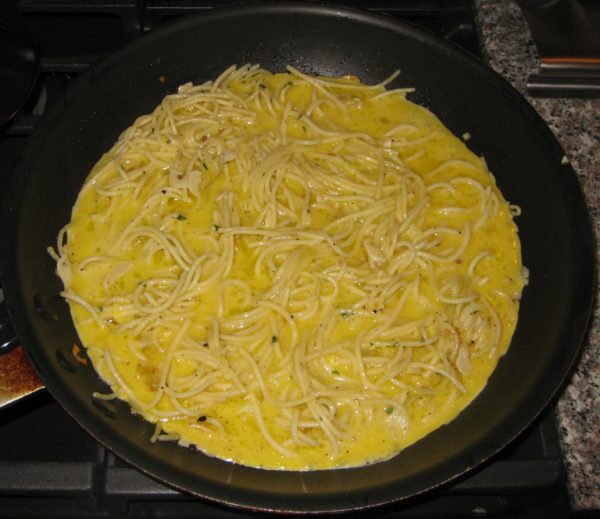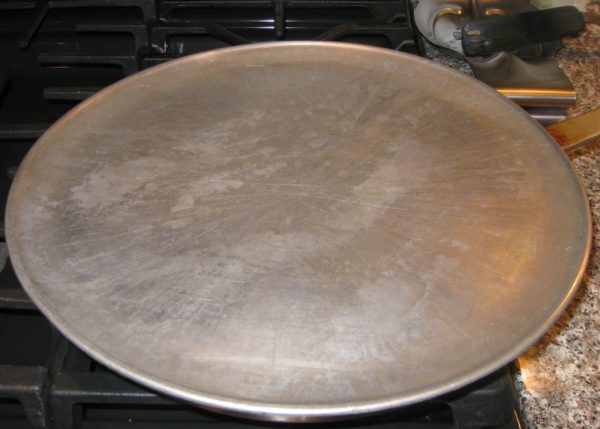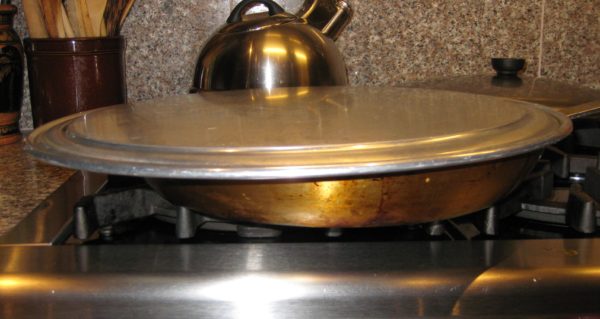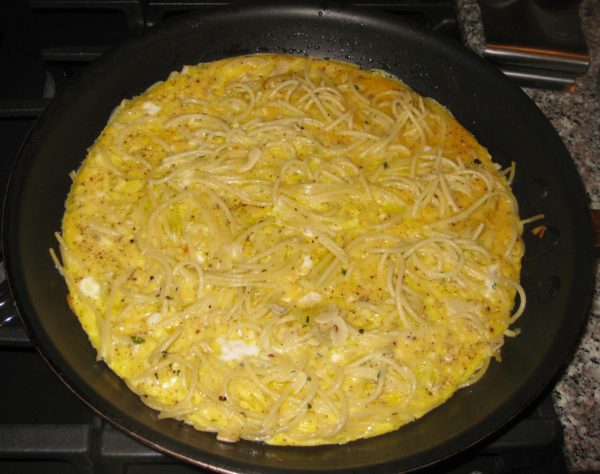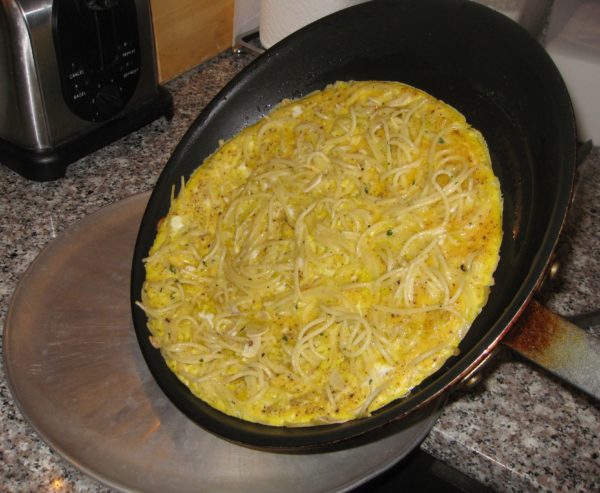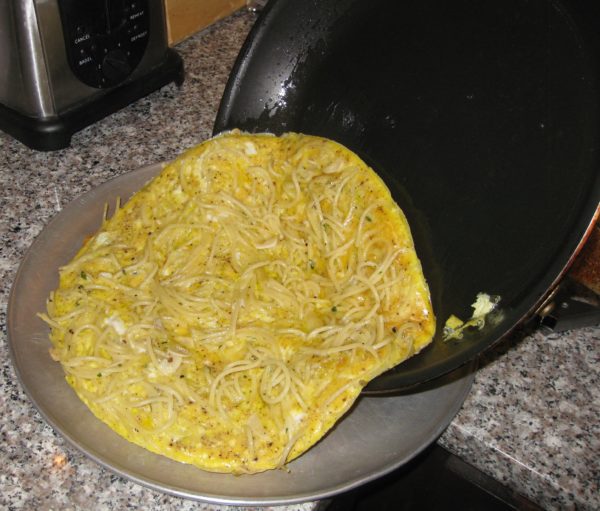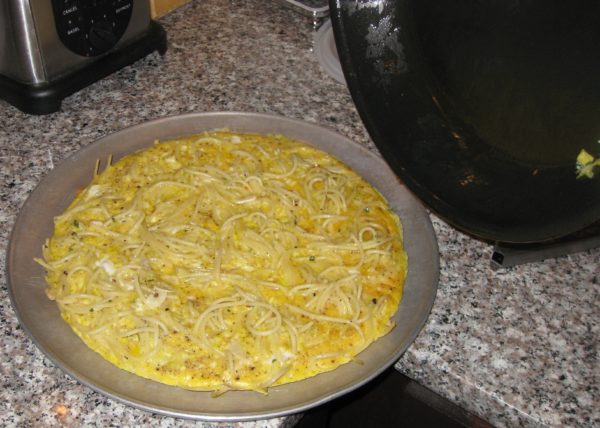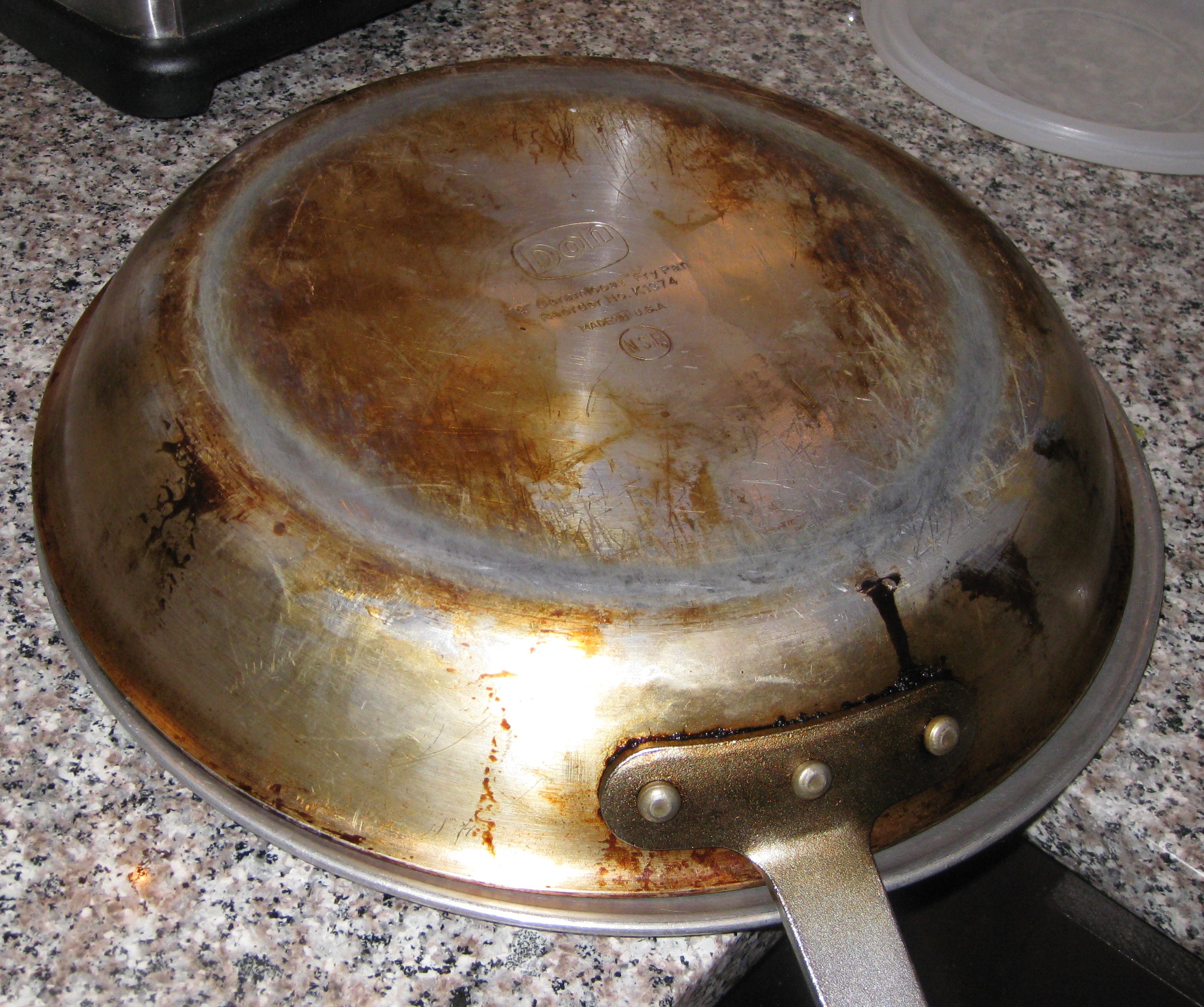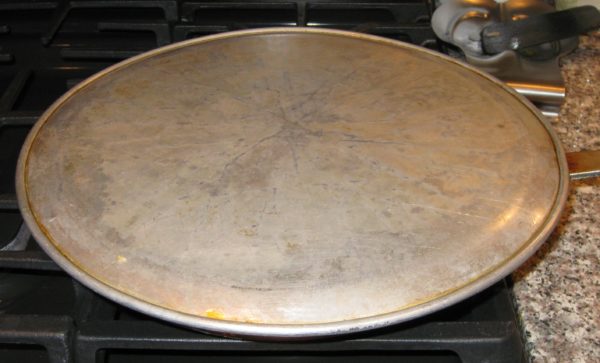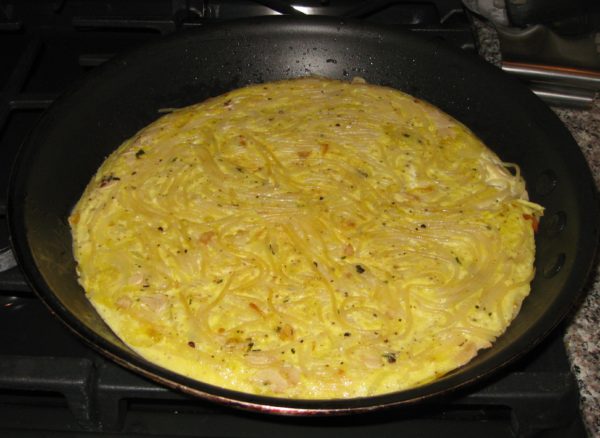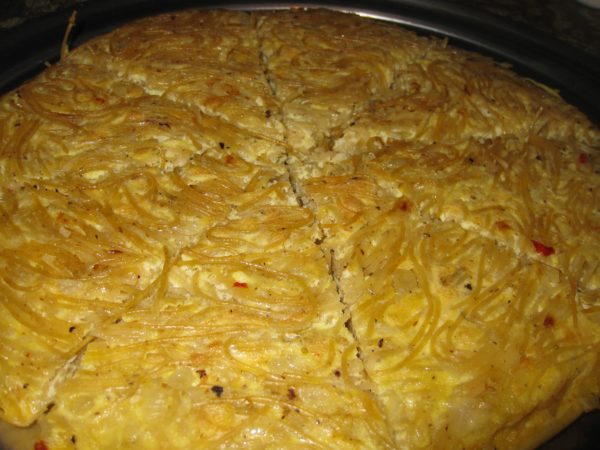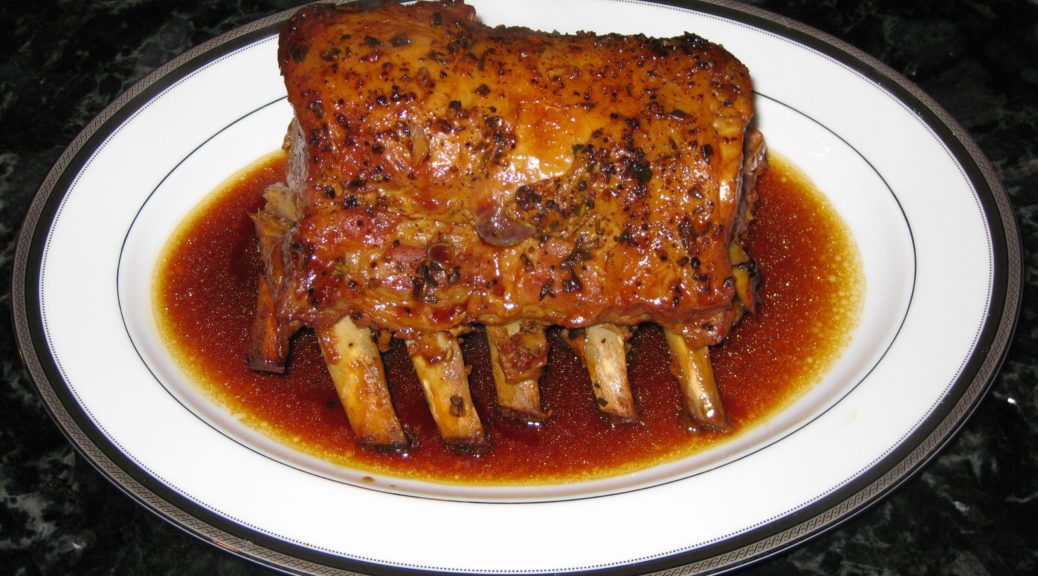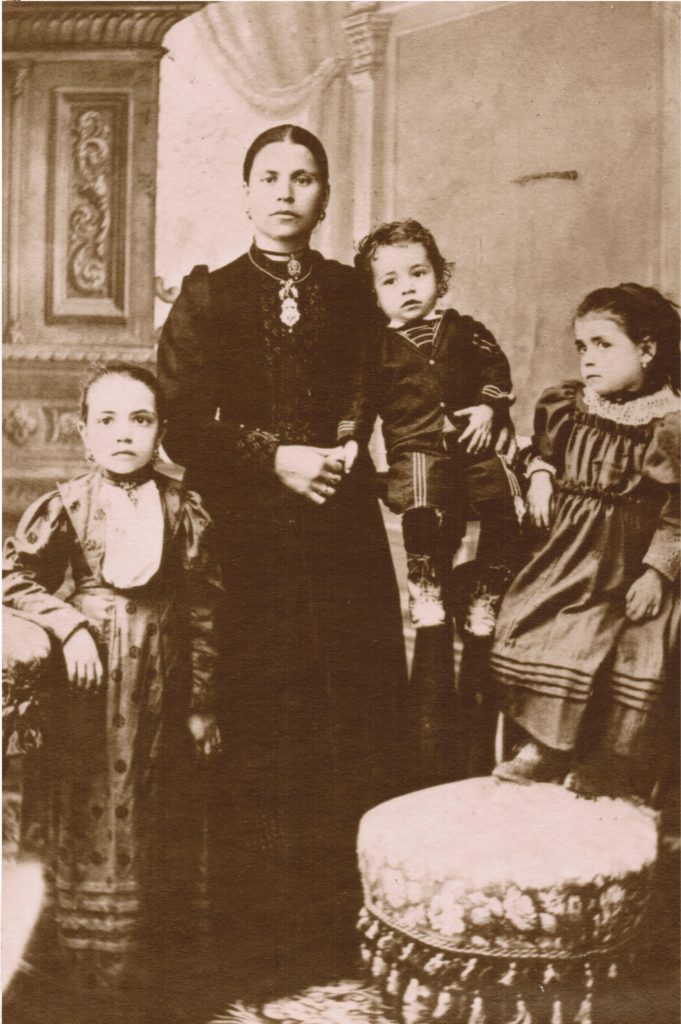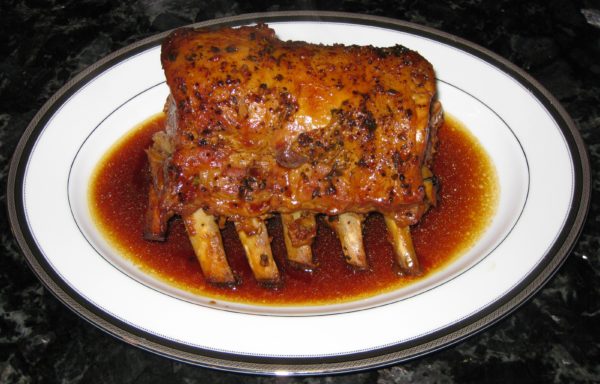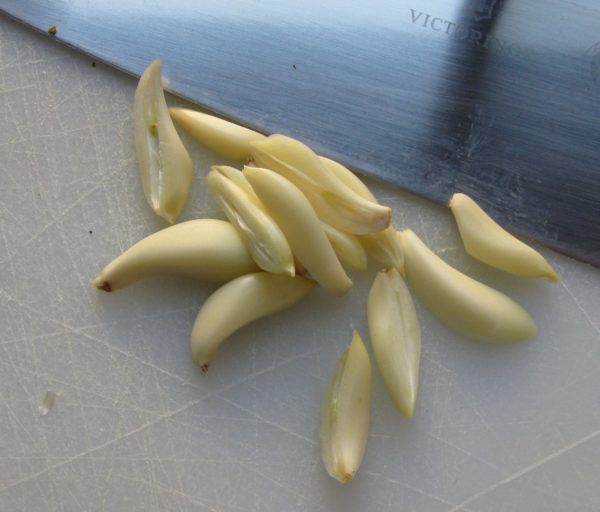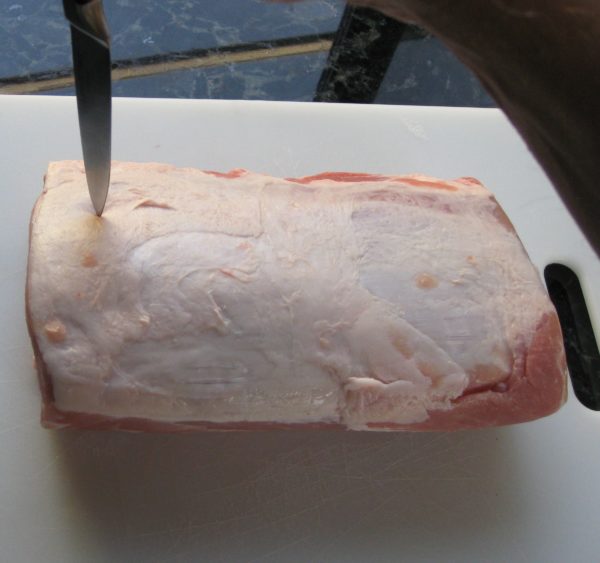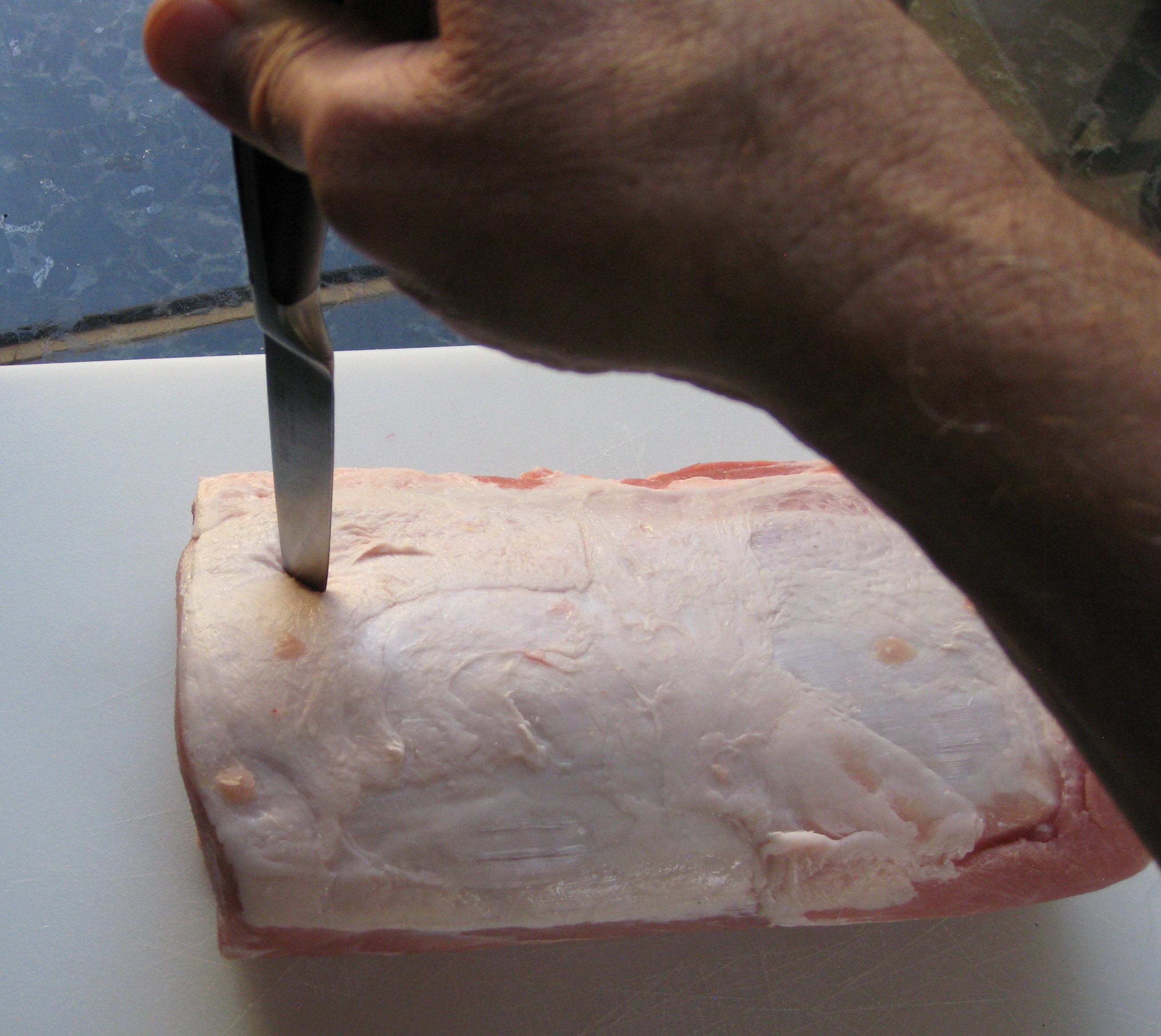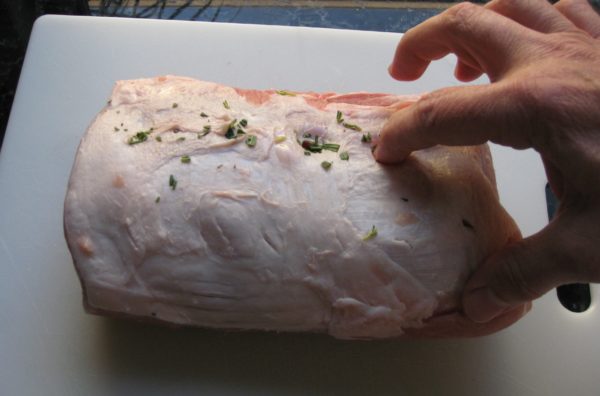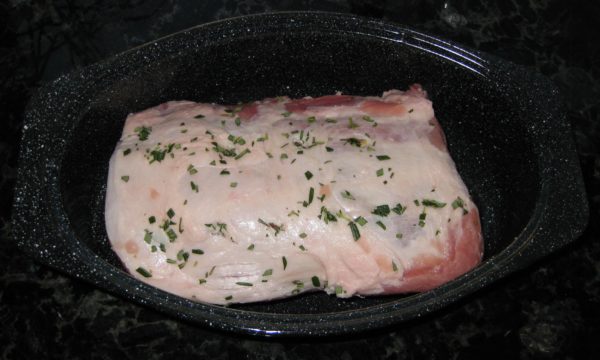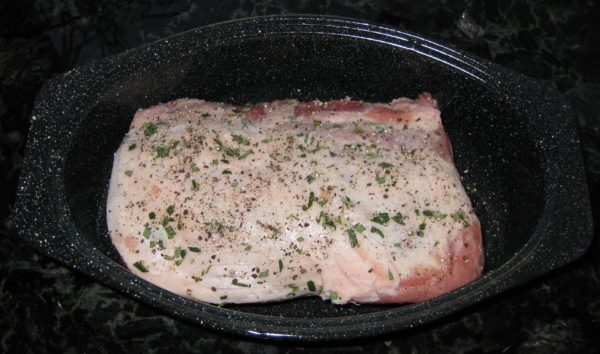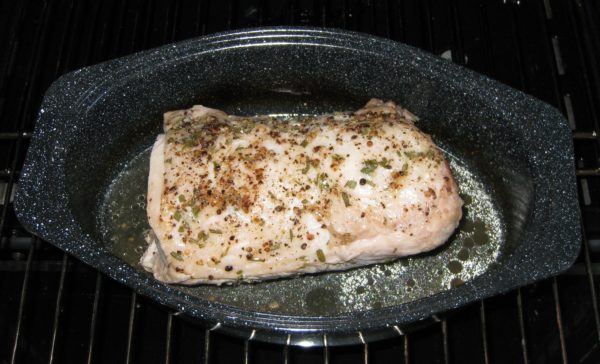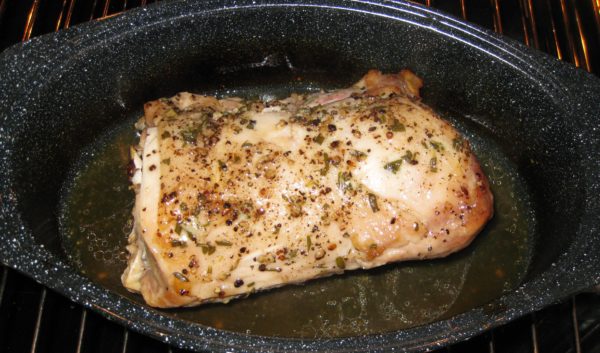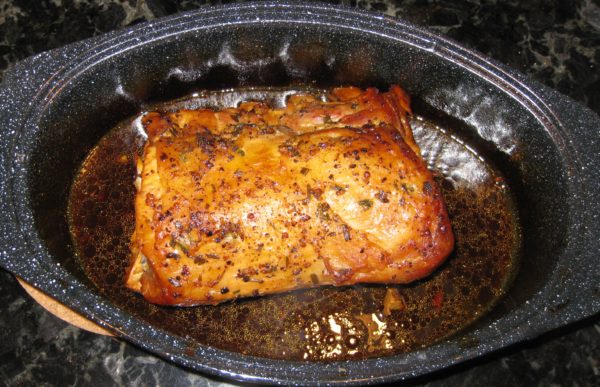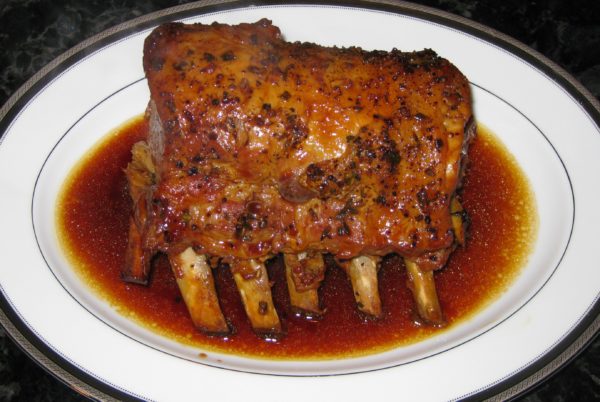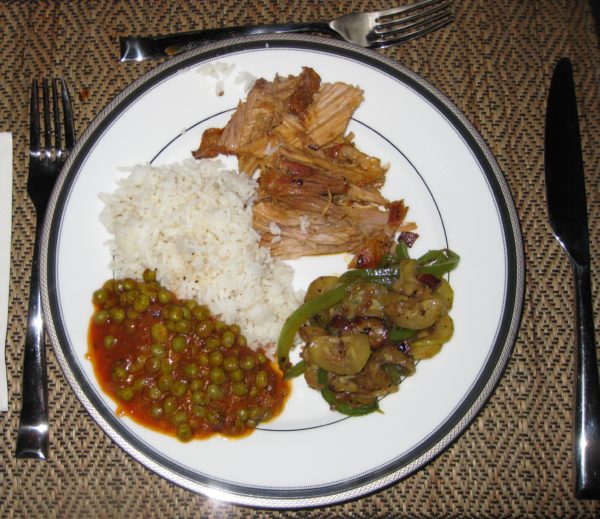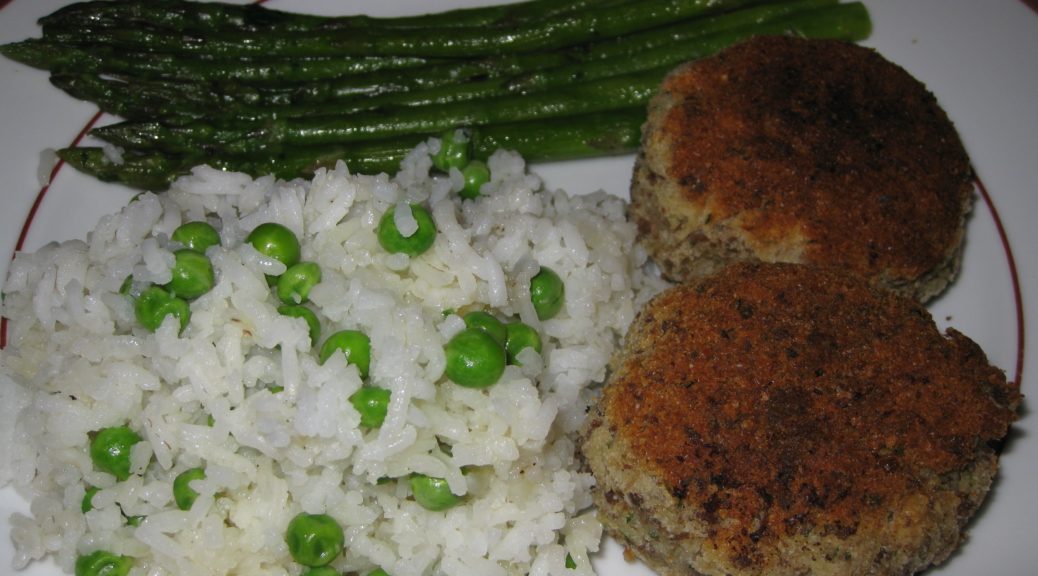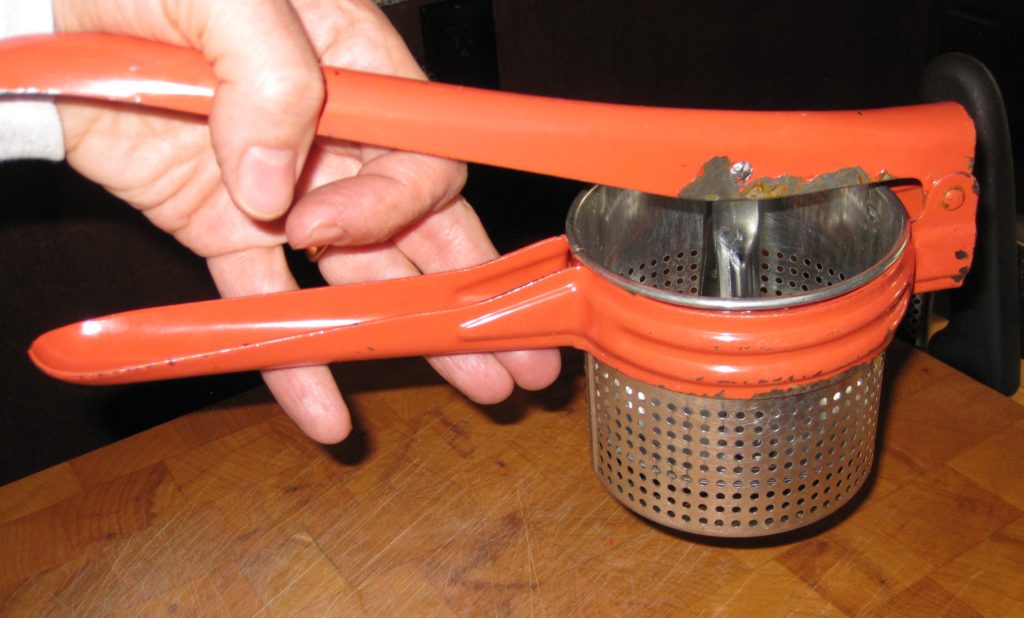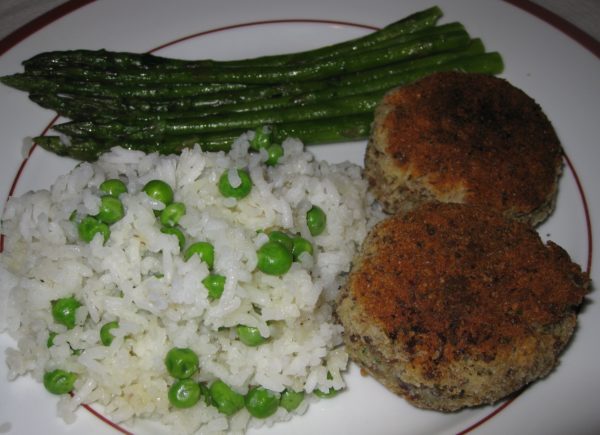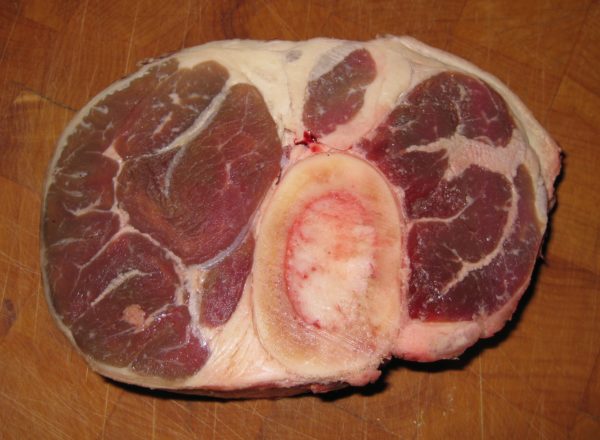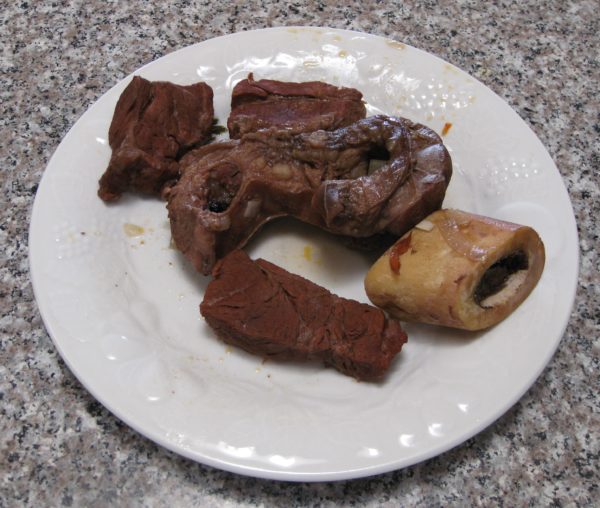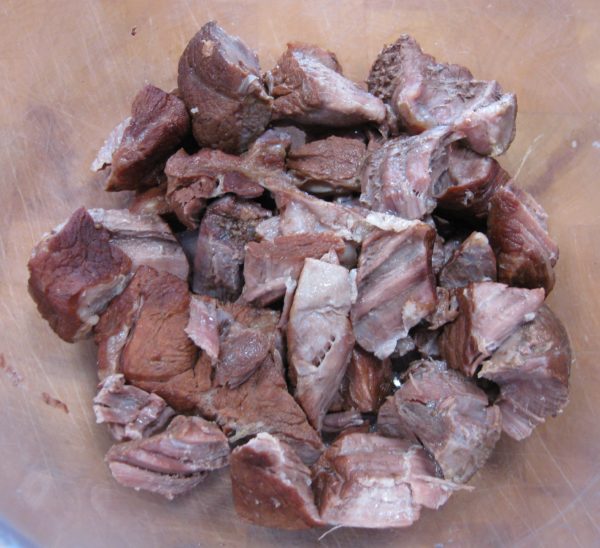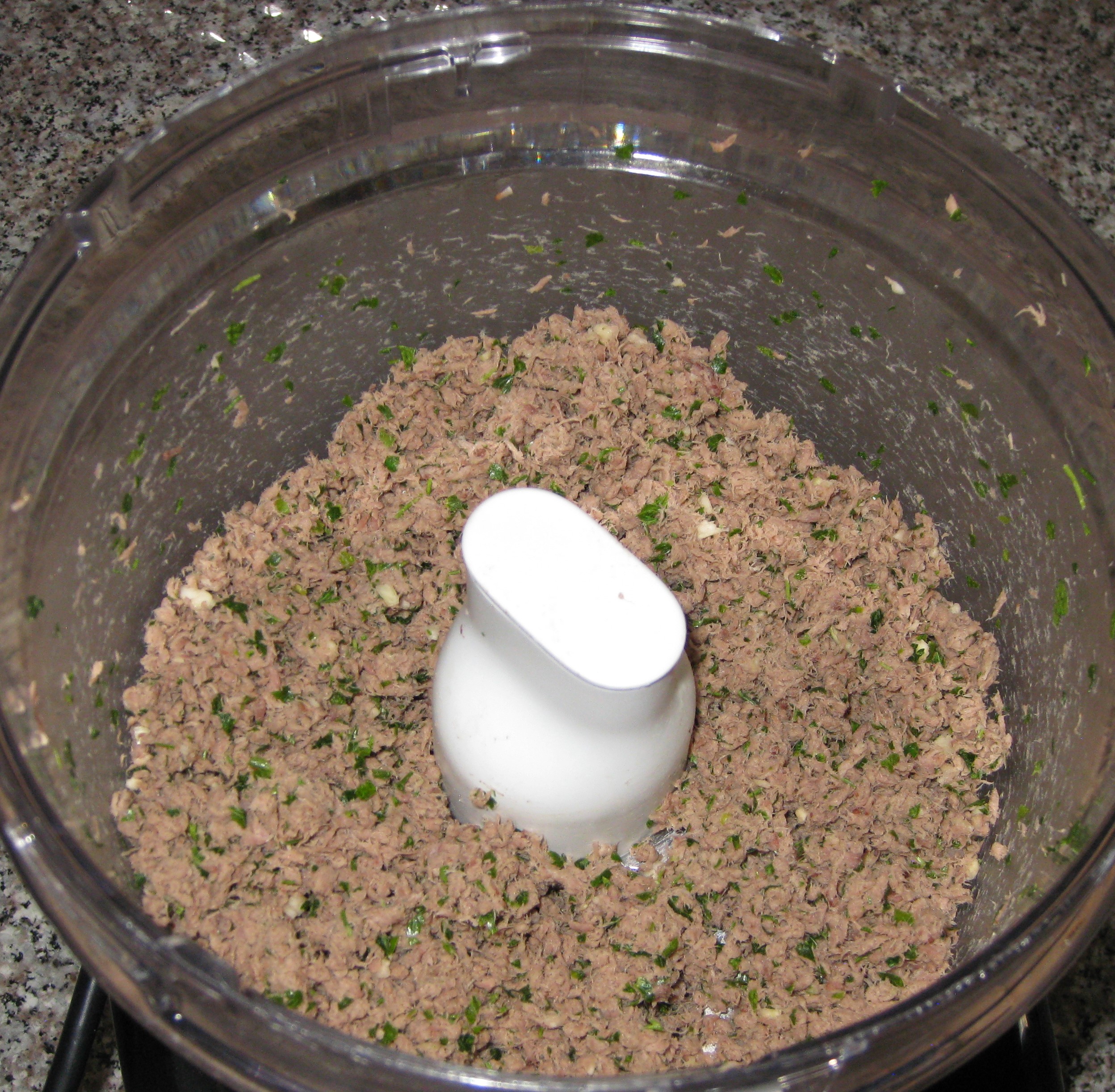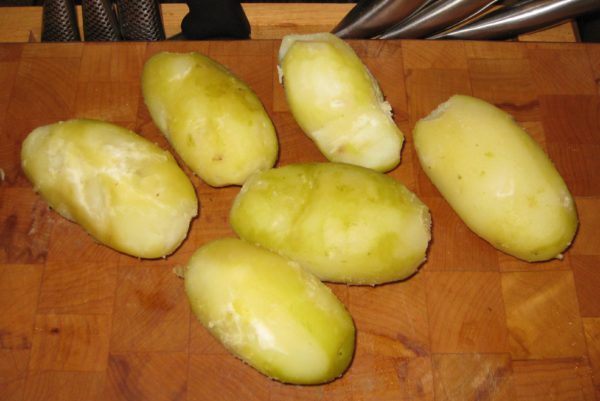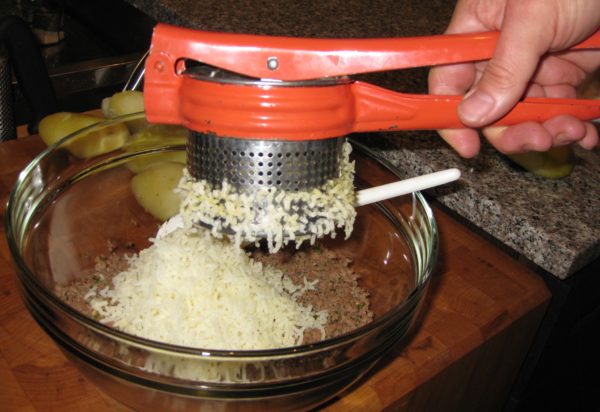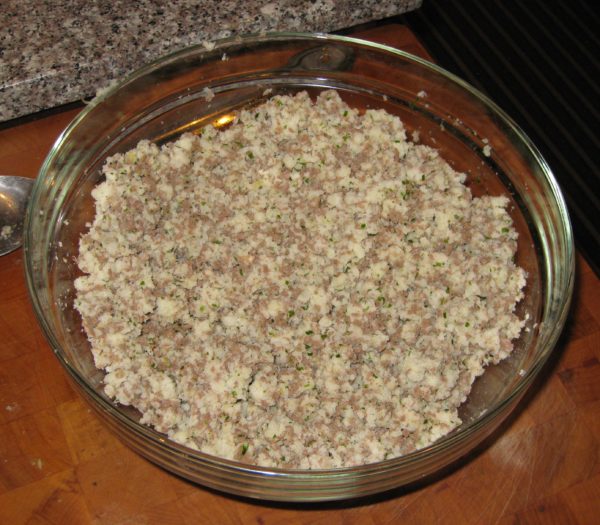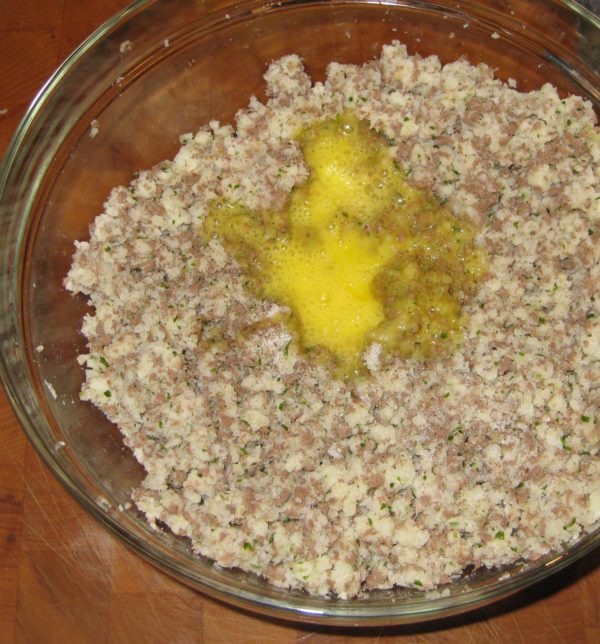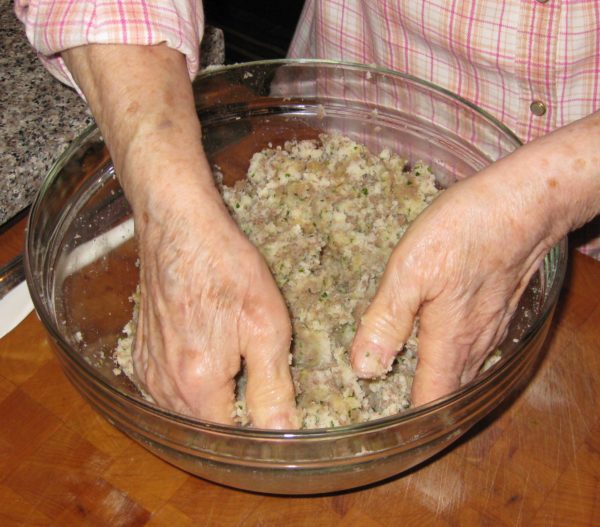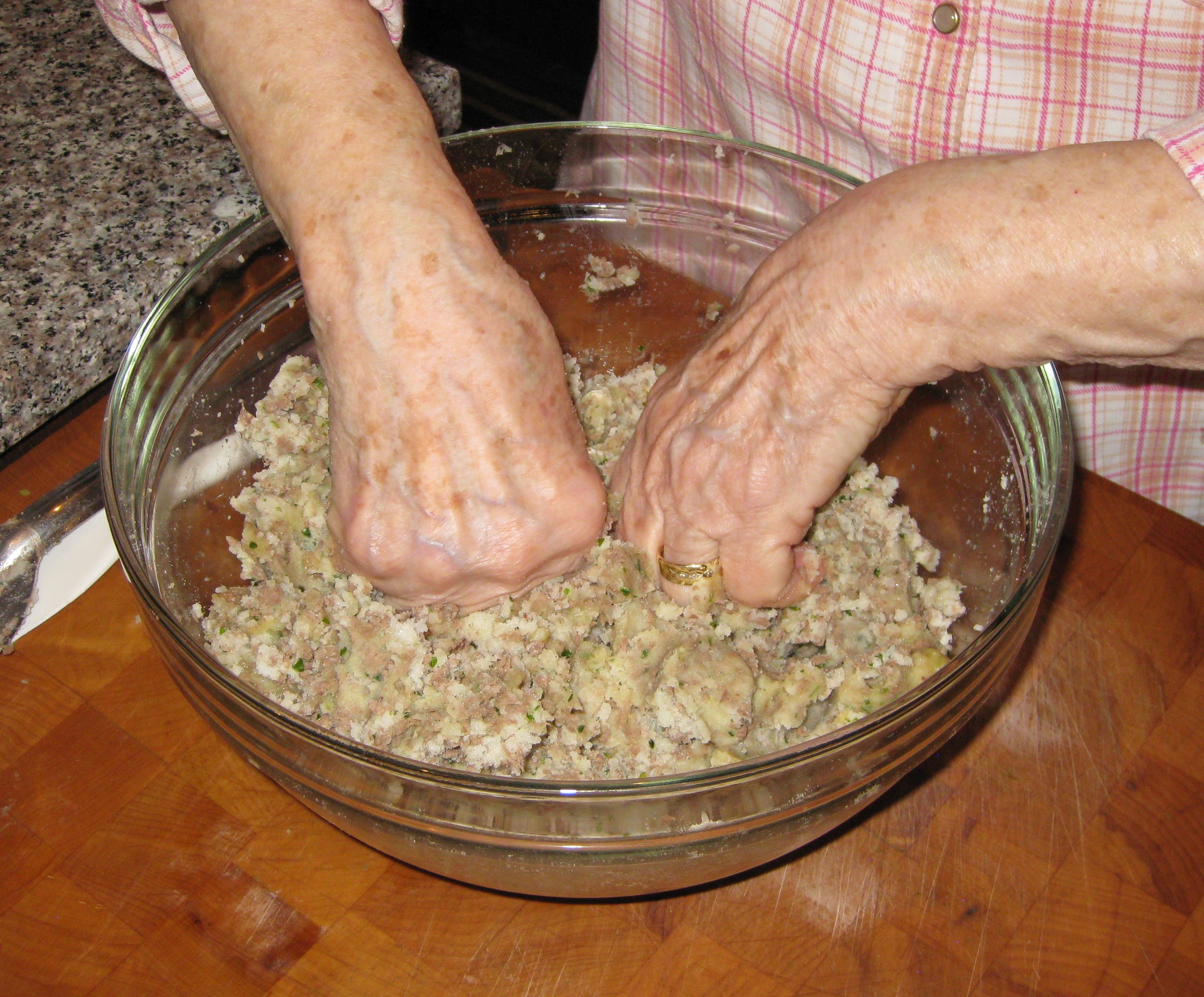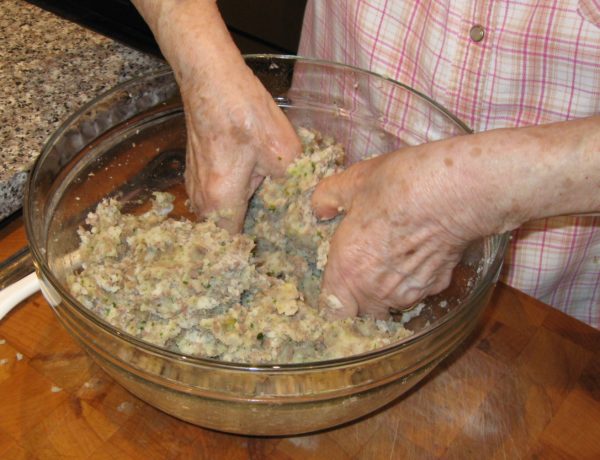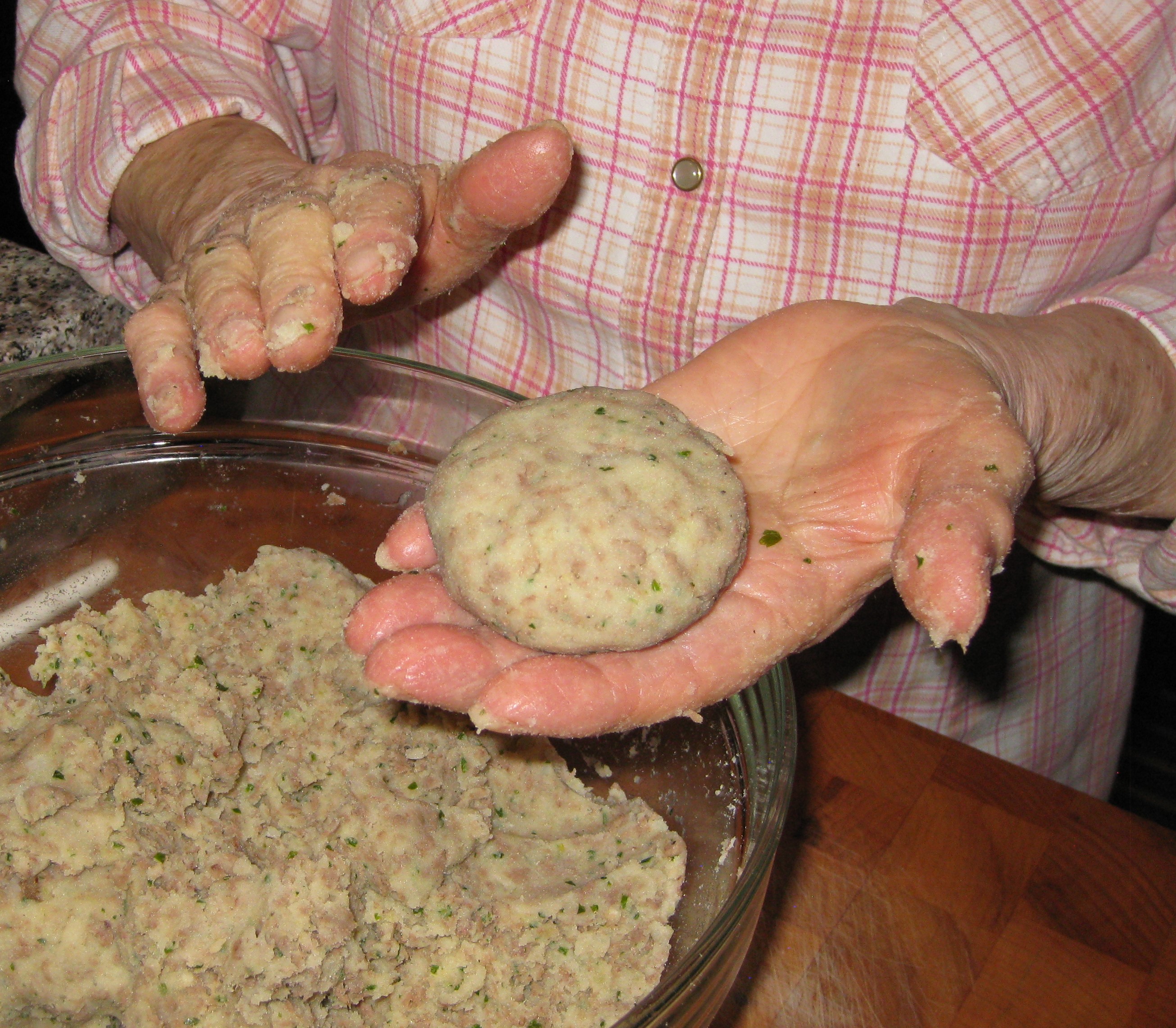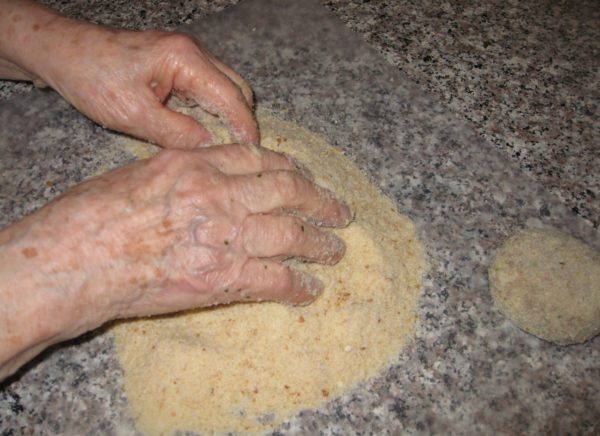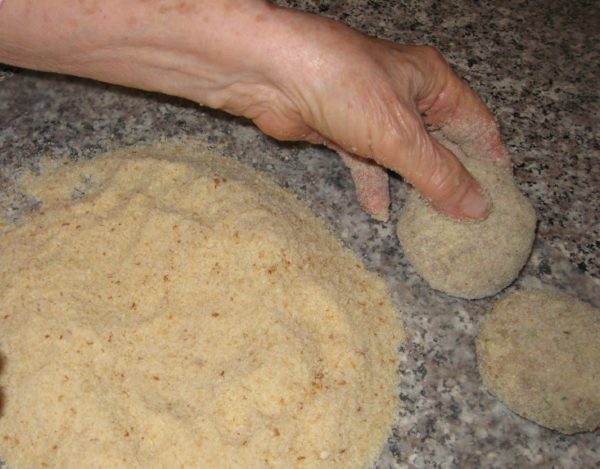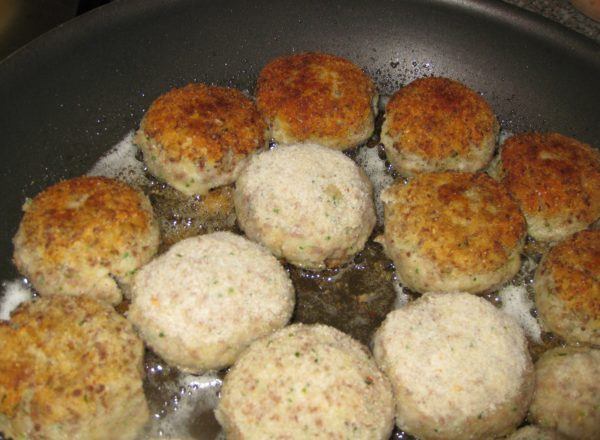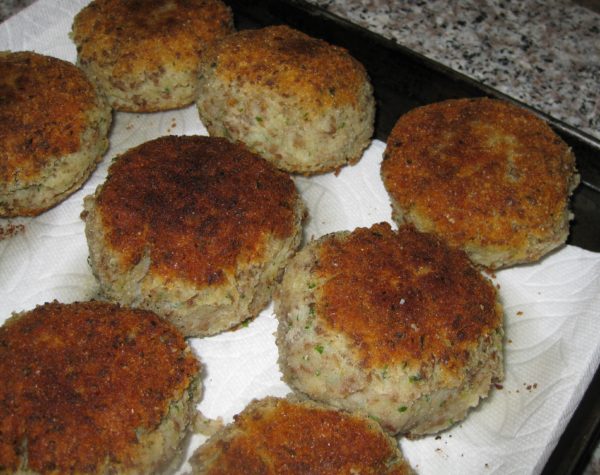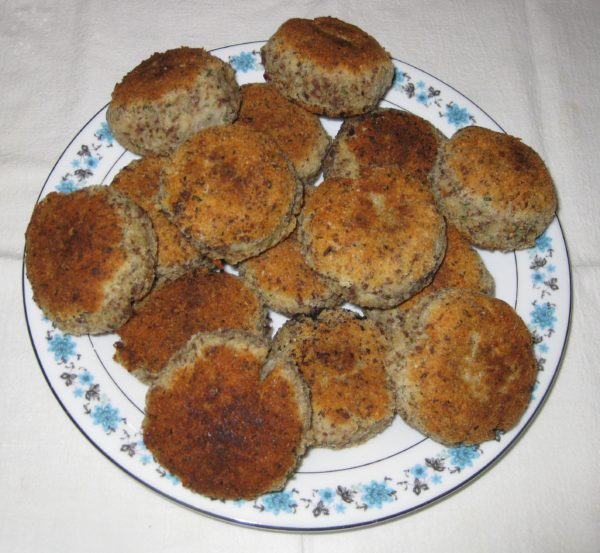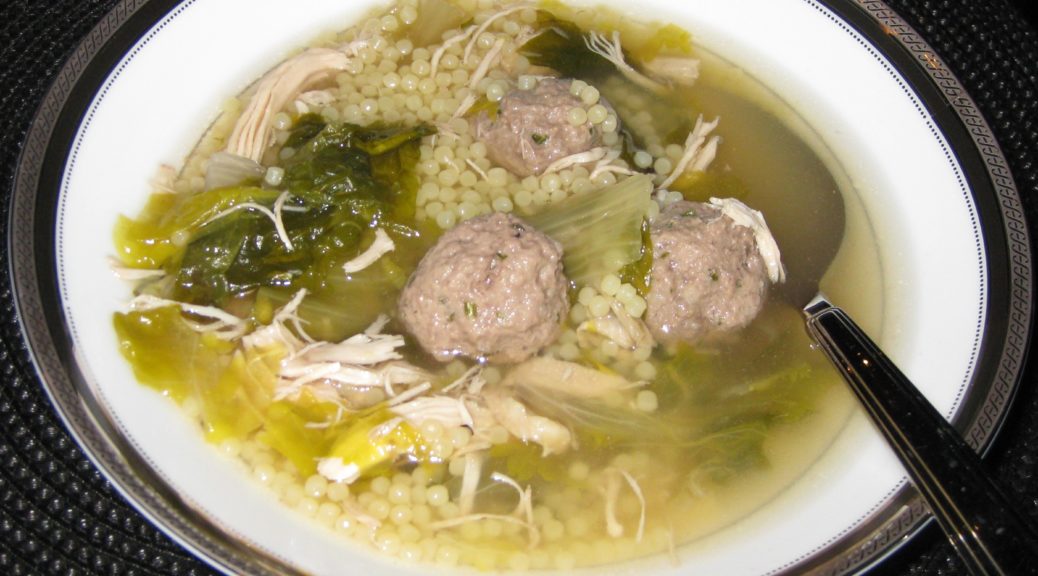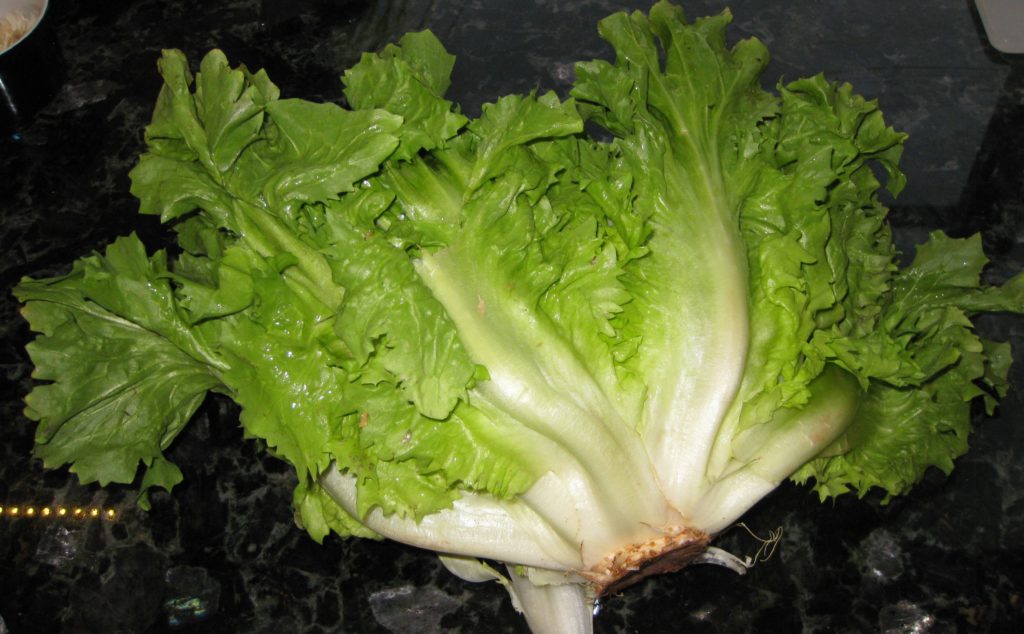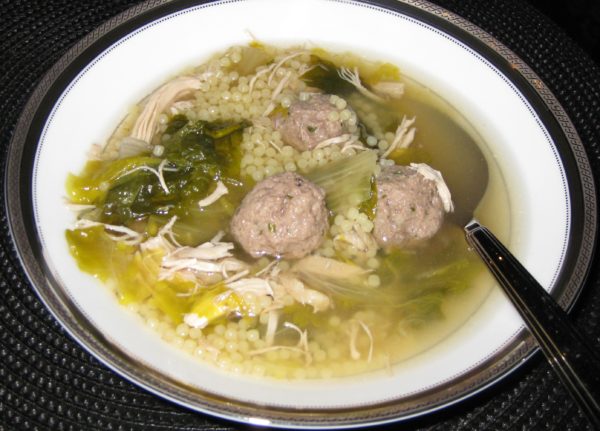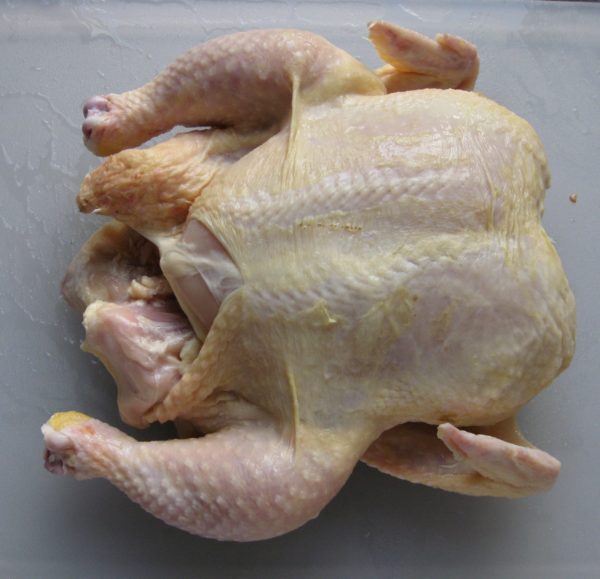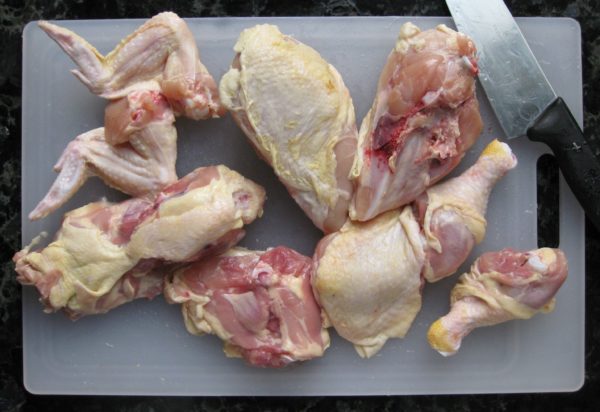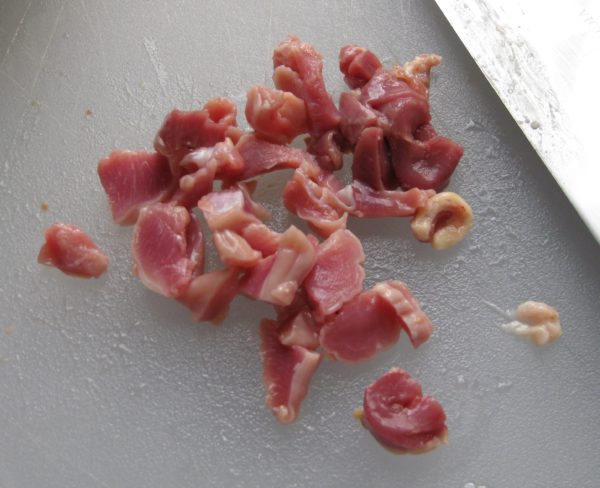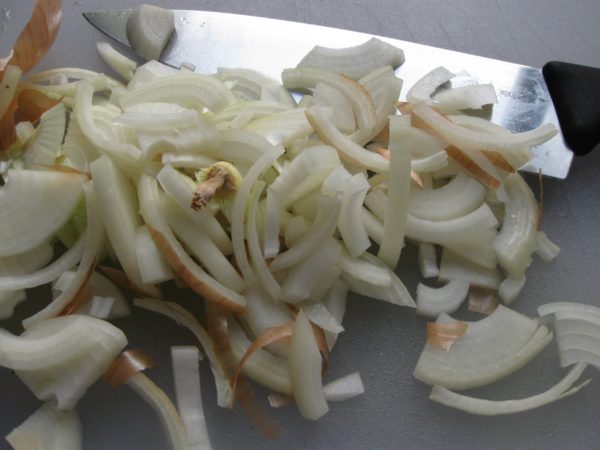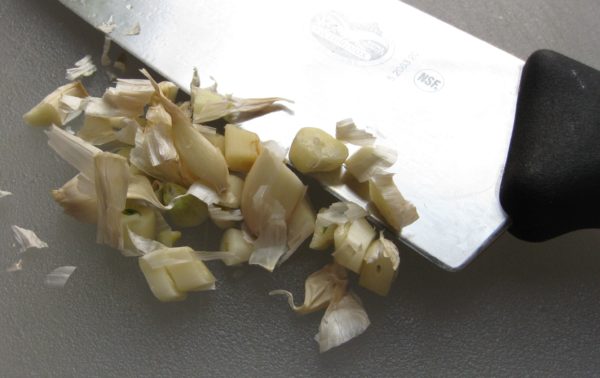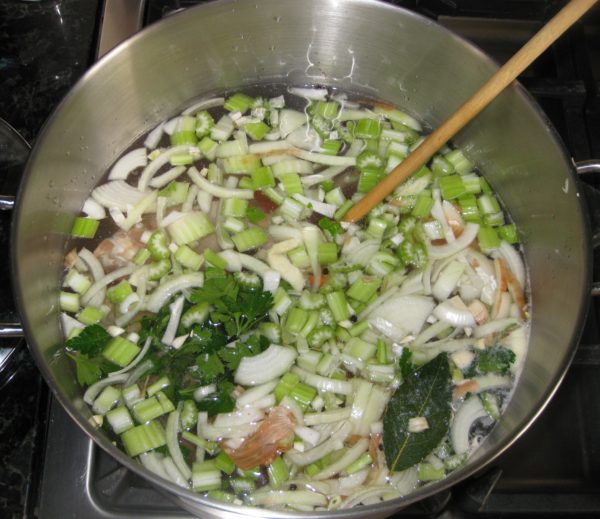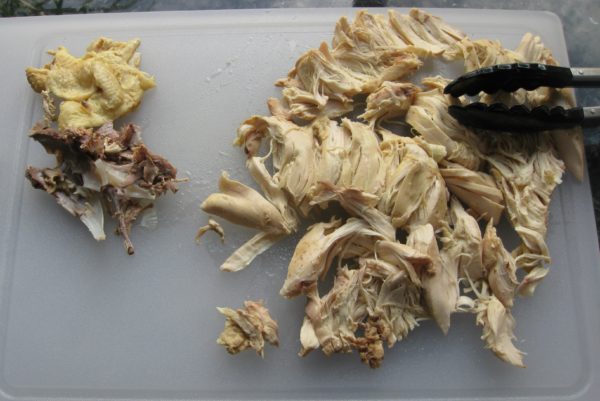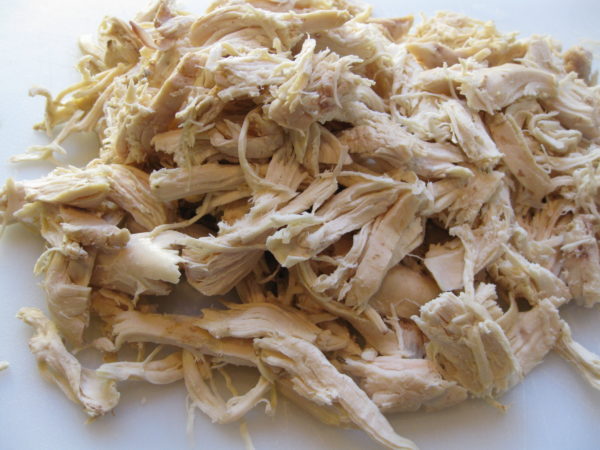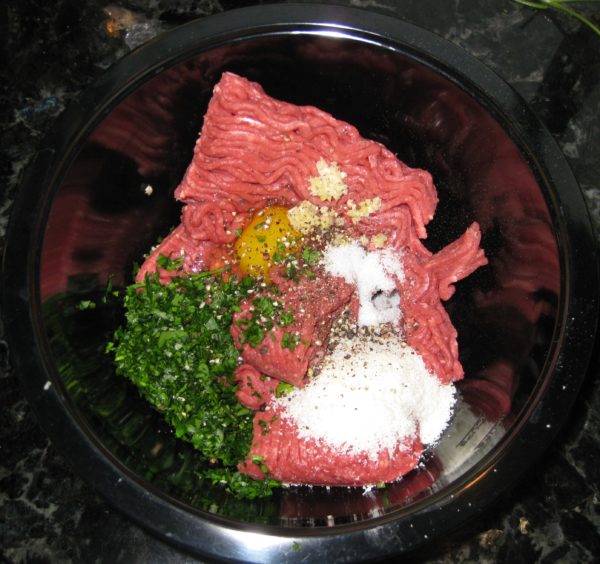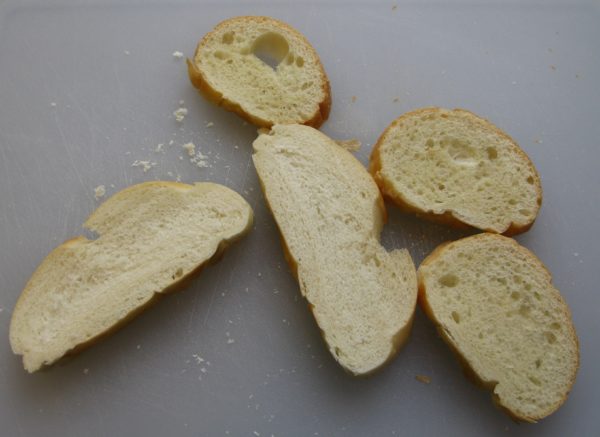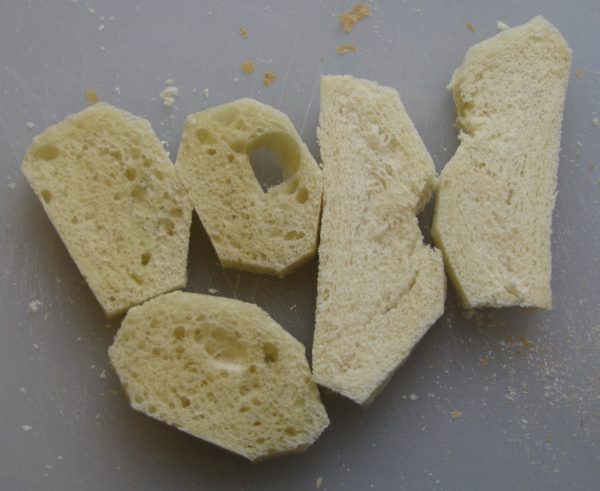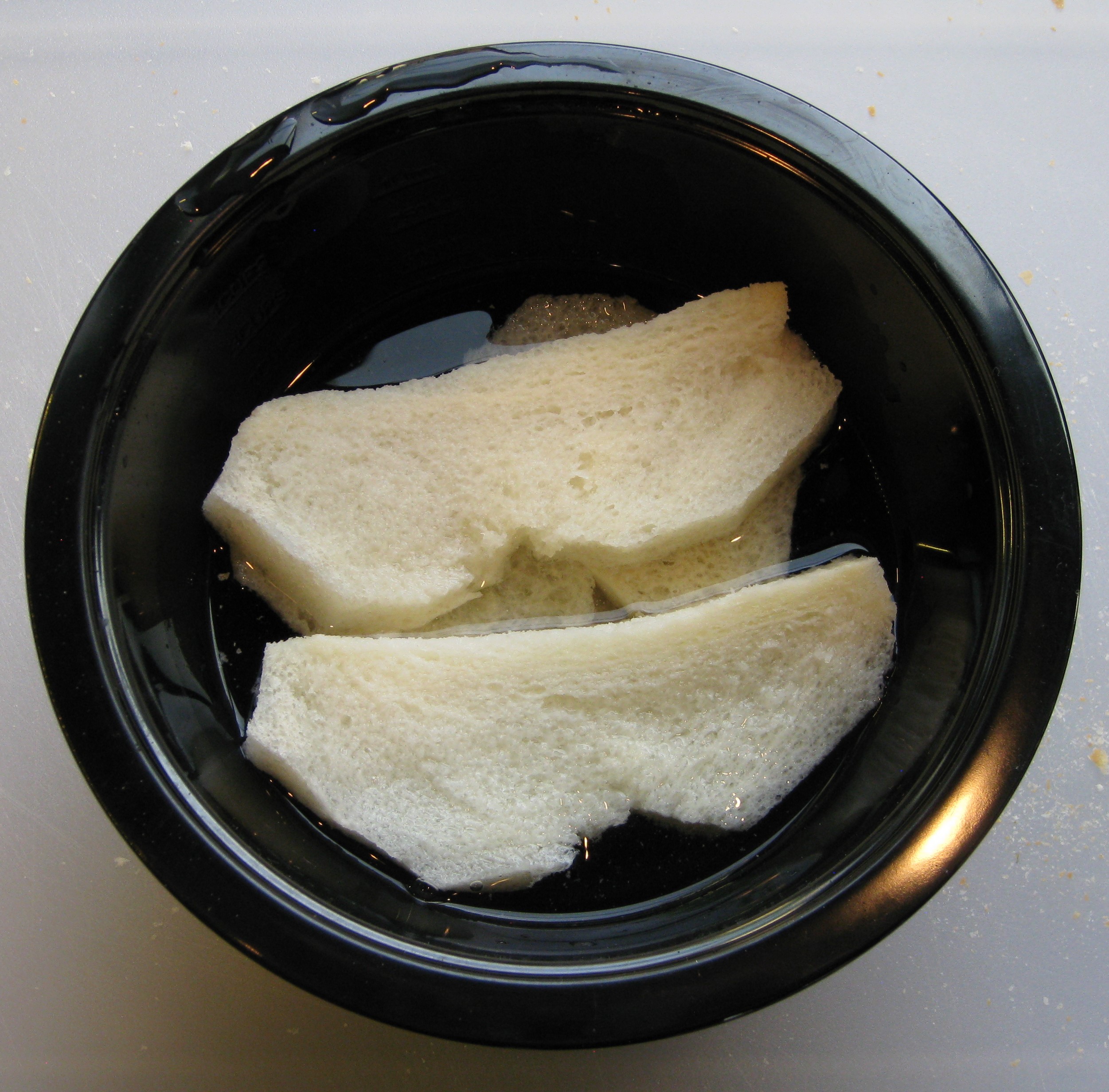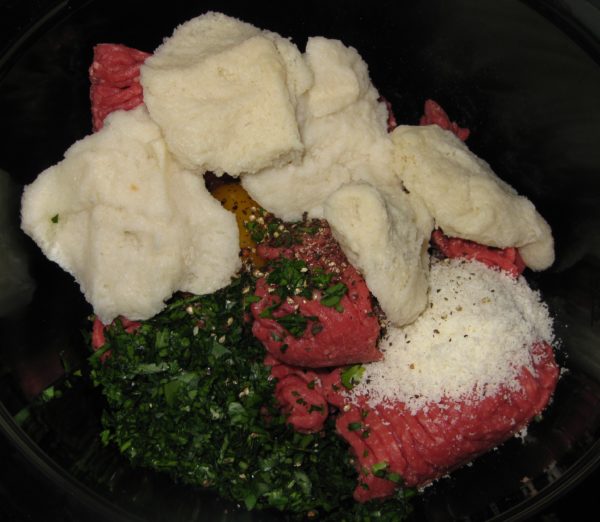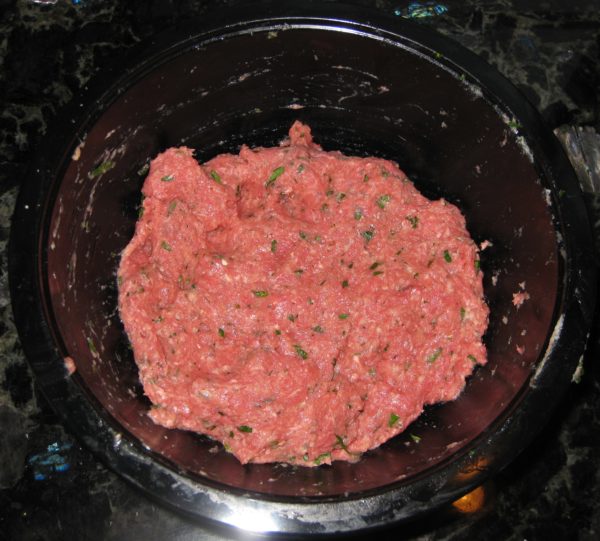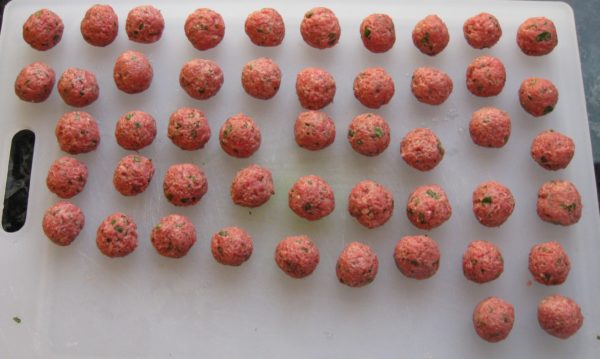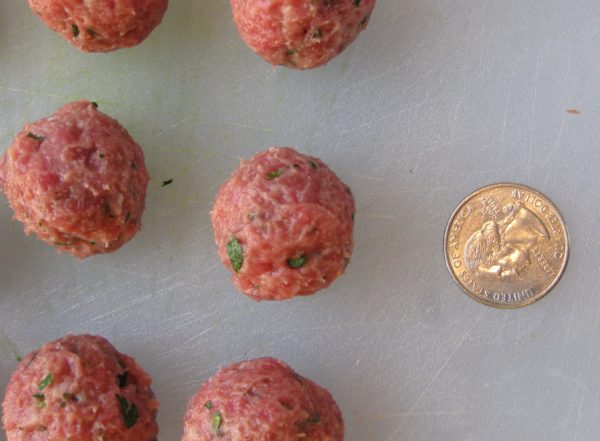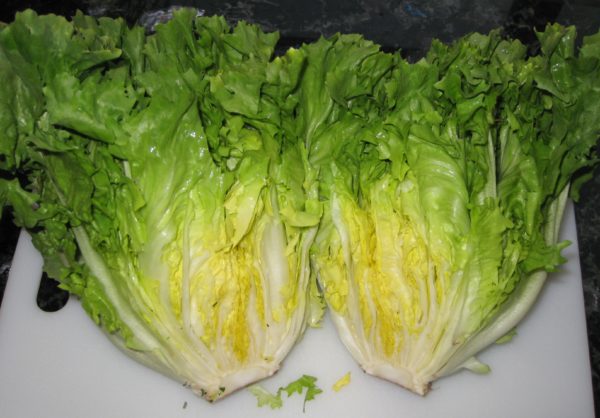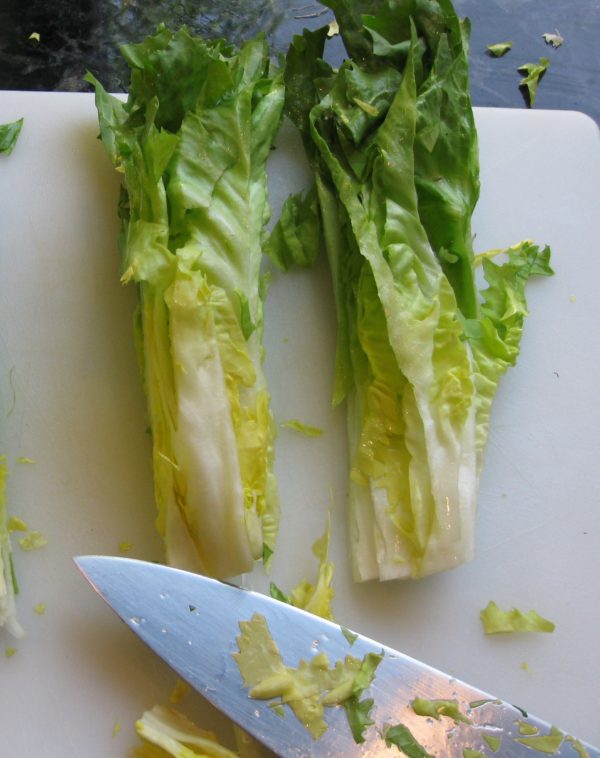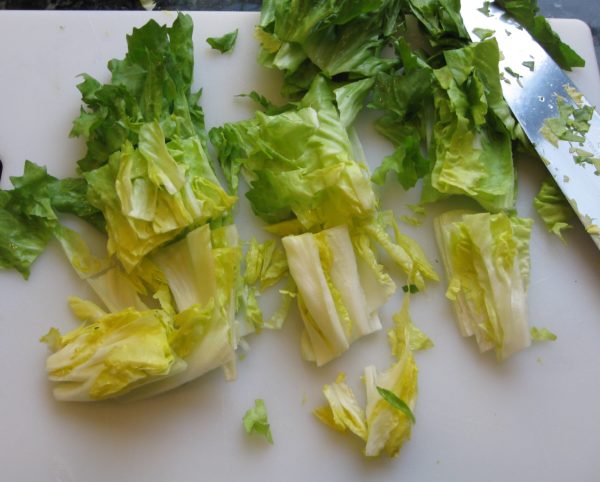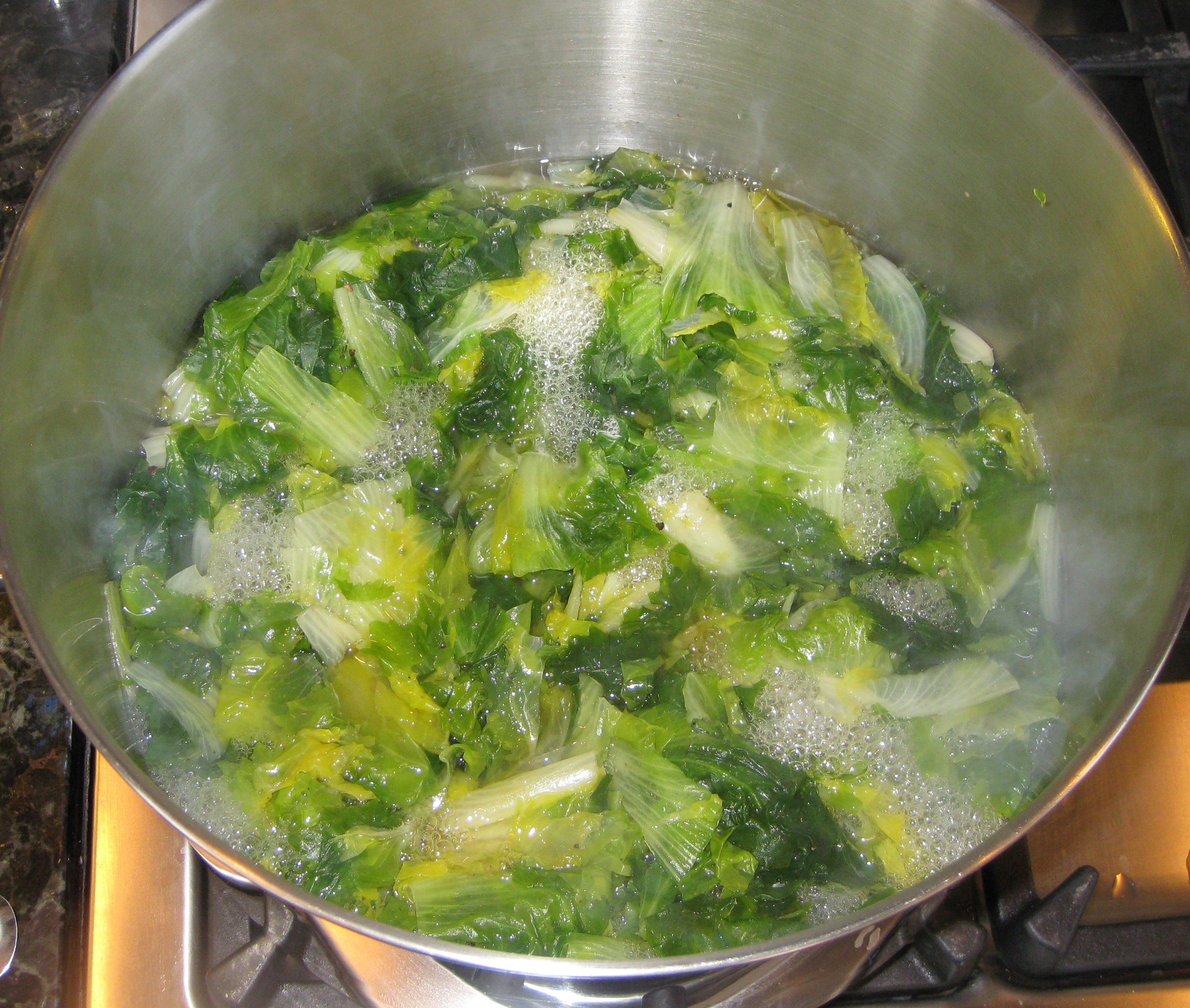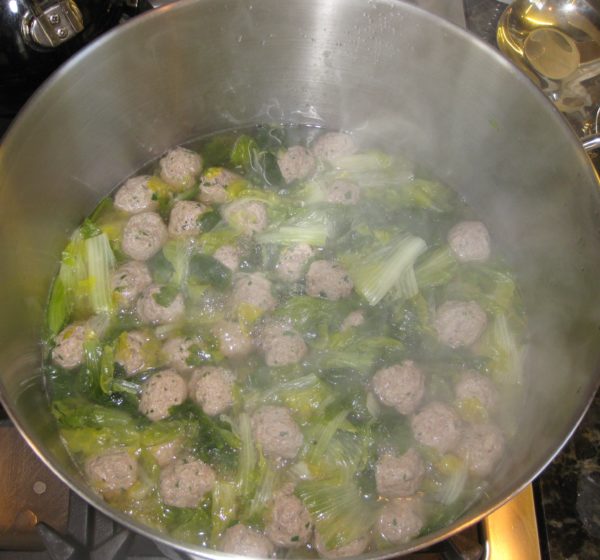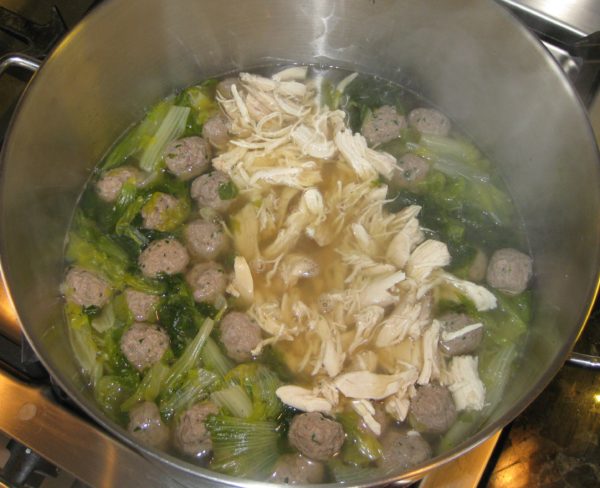May 9, 2018
This is the year of the Dog.
It may be old news, but Lunar New Year was Friday, February 16, 2018. We celebrated with close friends and a dinner menu with an extensive array of Asian dishes. There are many traditional dishes for Lunar New Year depending on the country. I chose to do a pan-Asian menu rather than focus on strictly traditional recipes from a single country.

We were in Palm Springs for Lunar New Year. The plan was to escape winter weather in Santa Fe which, as it turned out, was not very wintery after all, unlike what the East Coast experienced.
Follow us on your social media platform of choice
Sourcing Asian ingredients has become a real issue for me now that I don’t live in a major city. The only Asian grocery store in Santa Fe, Talin Market, closed a few months ago though the original location is still open in Albuquerque.
Palm Springs only has two Asian markets that I can find. Both are Filipino-owned and, although they stock an array of Asian goods, they really focus on Filipino foods.

Amazon came to the rescue. While I’d rather stand in the aisles of an Asian market reading and comparing packages of honest-to-goodness product, Amazon was a lifesaver.
There were eight of us for the Lunar New Year dinner.
The kitchen in our Palm Springs house is small, approximately 9 feet by 11 feet. Turning out a multi-course meal requires a lot of planning and organization. I divided the main part of the meal into four courses. Each course included a complementary array of foods and different cooking methods.
We started with hors d’oeuvres and cocktails. We ended with a simple, non-traditional dessert of gelato and fortune cookies, which I purchased. I assumed nobody was going to be too into dessert after all the other food.

Here’s the menu:
Hors d ’Oeuvres
Vegetable Dumplings with Soy-Vinegar Dipping Sauce
Steamed Edamame with Coarse Salt
First Course
Stir-Fried Chicken with Cashews and Snow Peas
Eggplant Hunan Style
Cambodian Fish with Bean Thread
Second Course
Korean Bulgogi
Indonesian Sweet Corn Patties
Szechuan Garlic Noodles
Third Course
Hot and Sour Soup
Fourth Course
Chinese Roast Pork
Japanese Carrot Salad
Mapo Tofu
Caramelized Tomatoes with Ginger and Vinegar
Join our mailing list and you’ll never miss a recipe again!
I recently published my recipe for Chinese Roast Pork. Hot and Sour Soup is coming up in a couple of weeks. Today, however, we’re focusing on a Cantonese classic, Stir-Fried Chicken with Nuts and Vegetables, specifically cashews and snow peas.
This is a recipe that I started making during junior year in college. It got tweaked a lot over that year. By then I was comfortable with the end product and didn’t really do much with it… until this year.
I didn’t really change the recipe, though. I changed the pan!

You’ve probably figured out that I’m prone to excess where kitchen equipment comes in. I have four woks: two carbon steel ones that date back to college and two that are a decade or so younger, one aluminum and one carbon steel. Both of these are larger than the ones from my college days.
I always cook my stir-fries in a wok but this particular dish is always a problem due to the “velvet” coating on the chicken. The coating always sticks to the wok. I suspect I could eliminate that problem by using enough oil to deep fry the chicken but that wasn’t supposed to be the way to cook it. So, I always just accepted the “sticking-chicken” problem.
Until now.
I used a large, non-stick skillet.
It worked like a charm!!!
I don’t think I’ll give up my woks any time soon but for this particular dish, non-stick is definitely the way to go.
Afterthought: This recipe calls for MSG, though, of course, you can leave it out if you wish. If you’re at all interested in the hype about the health effects of MSG, I suggest you read this article.
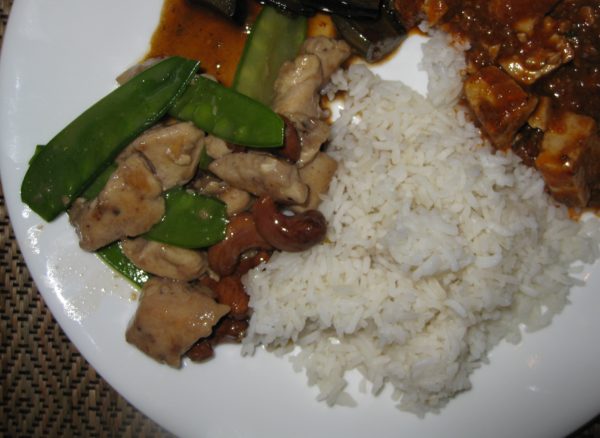
| Prep Time | 20 minutes |
| Cook Time | 15 minutes |
| Servings |
people as part of a Chinese meal
|
- 1 1/2 pounds boneless skinless chicken breast
- 3/4 teaspoon salt
- 1/2 teaspoon black pepper
- 1/2 teaspoon Chinese five spice powder
- 1/2 teaspoon MSG
- 4 teaspoons cornstarch
- 4 teaspoons vegetable oil
- 1 egg white
- 2 1/2 tablespoons Chinese rice wine or pale dry sherry or sake
- 4 teaspoons soy sauce
- 1 teaspoon sugar
- 1/2 teaspoon MSG
- 2 teaspoons cornstarch
- 4 tablespoons water
- 1 cup raw cashews
- 8 ounces snow peas
- 1 1/2 teaspoons minced fresh ginger
- 2 cloves garlic minced
- 1 teaspoon Asian toasted sesame oil
- Vegetable oil for deep-frying nuts such as peanut or corn oil
Ingredients
Velvet Chicken
Sauce
Assembly
|

|
- Cut the chicken into ½ inch cubes.
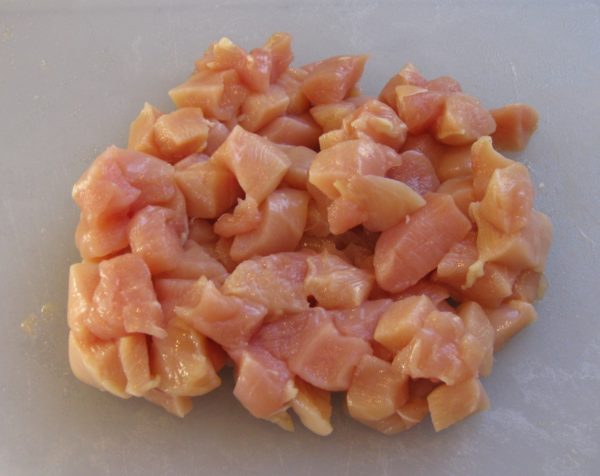
- Put the chicken in a non-reactive dish.
- Sprinkle the chicken with salt, pepper, five spice powder and MSG. Mix well then let stand 20 minutes.
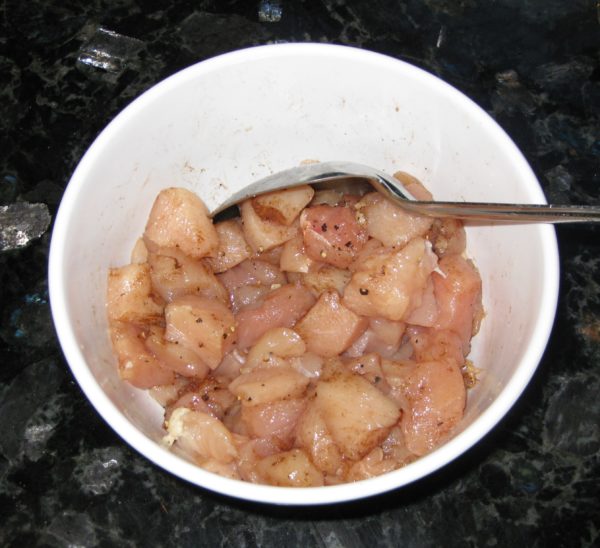
- Sprinkle the chicken with cornstarch and 4 teaspoons of oil. Mix well and let stand 20 minutes.
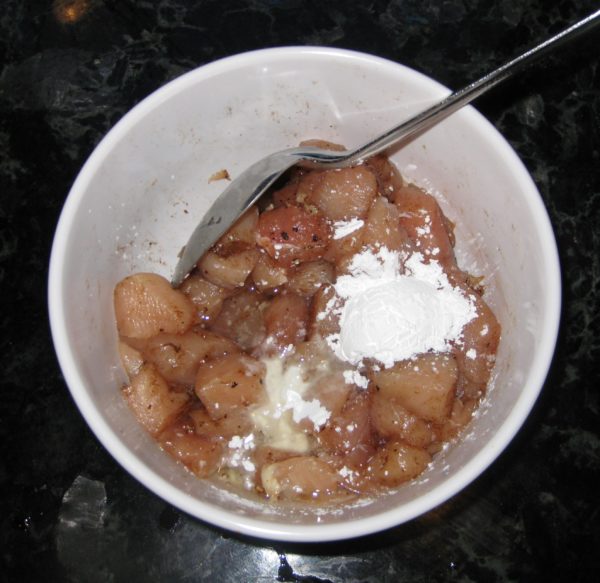
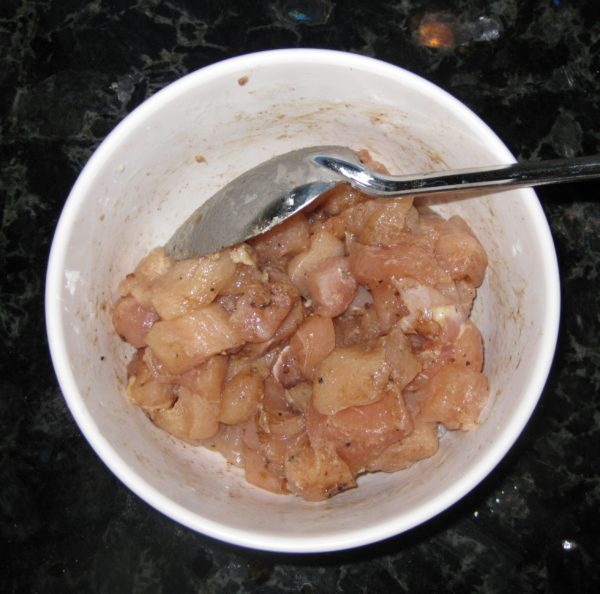
- Fold the egg white into the chicken. Let stand 30 minutes. If not using immediately, the chicken can be refrigerated, covered, for several hours at this point.
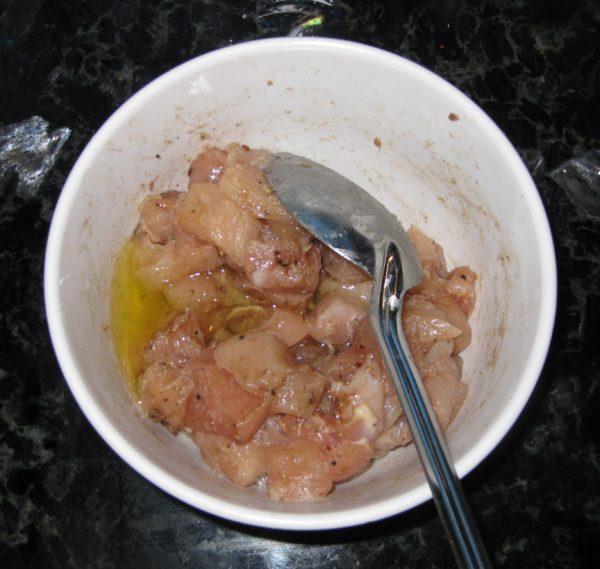
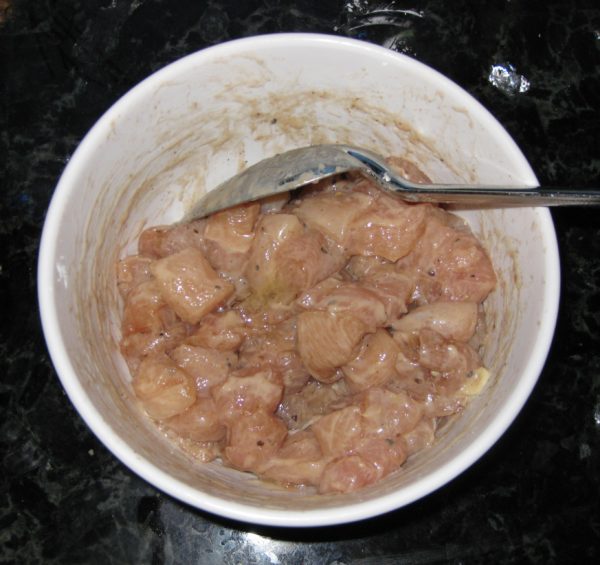
- Combine all sauce ingredients, stir well and reserve.
- Deep fry the nuts until golden. Once they start to color, they will cook rapidly. Careful attention is required to avoid burning them.
- When golden, remove the nuts from the oil and spread them on a paper towel to drain.
- Cut the tips off the snow peas.
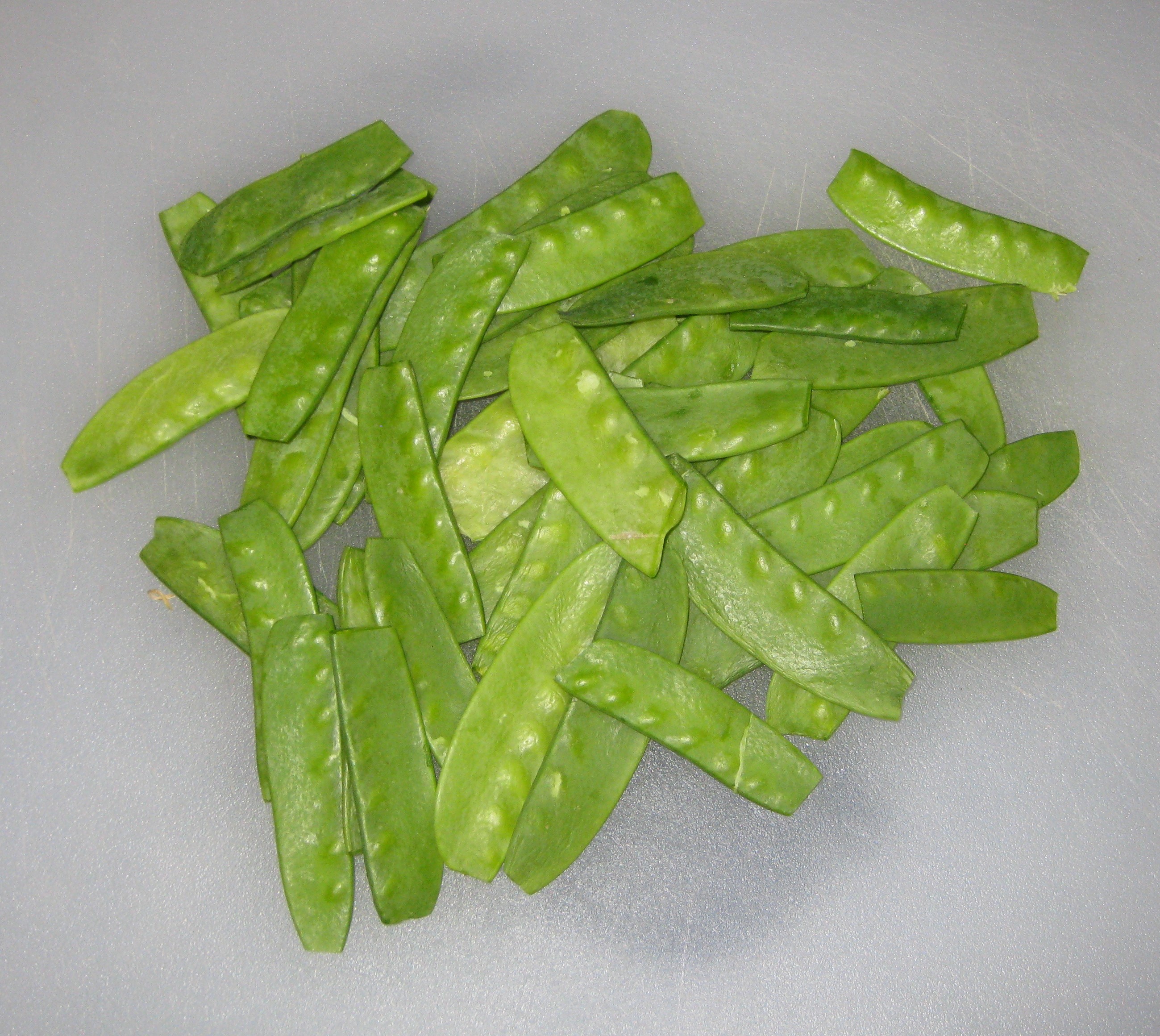
- Using a large non-stick skillet, stir-fry the snow peas in 3 tablespoons of vegetable oil over high heat for about 30 seconds, until bright green. (You can use some of the oil used to fry the nuts if you wish.)
- Transfer the cooked snow peas to a plate to cool.
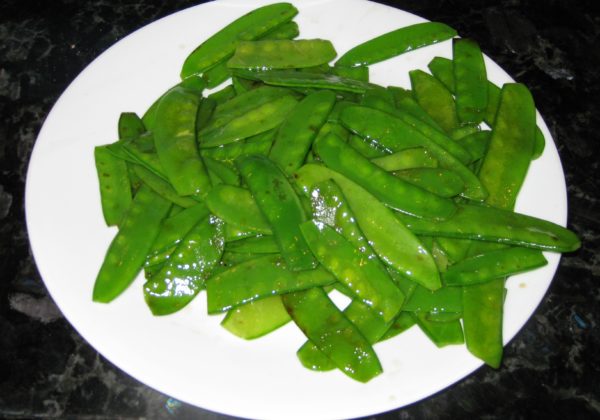
- In the same non-stick skillet, stir-fry the garlic and ginger over high heat, until fragrant, approximately 30 seconds, adding a few tablespoons more oil if needed.
- Add the chicken and stir-fry over high heat until just cooked through, approximately 2-3 minutes.
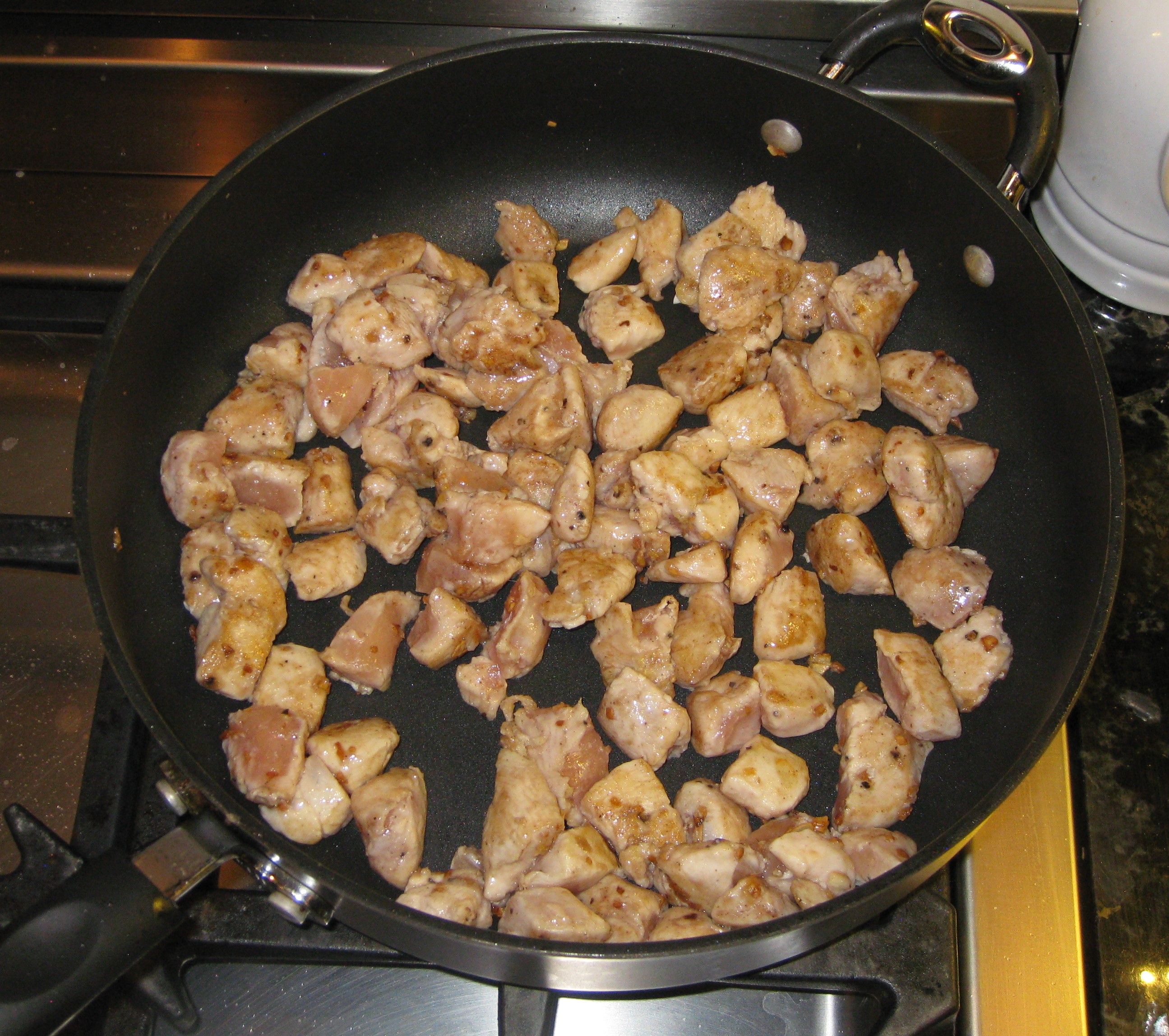
- Stir the sauce mixture to combine and add it to the chicken.
- Bring to a boil and cook until thickened, stirring constantly, approximately 1 minute.
- Stir in the cooked cashews and snow peas.
- Remove the pan from the heat and stir in the sesame oil.
- Serve immediately with steamed rice.
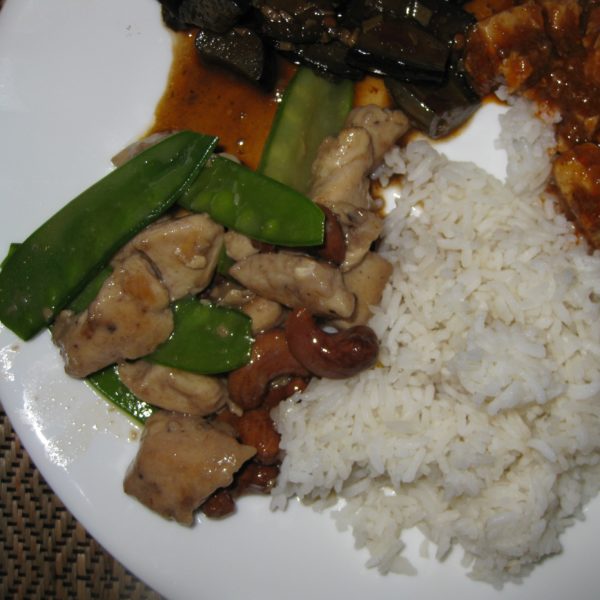
Copyright © 2018 by VillaSentieri.com. All rights reserved.

